Nag Mark-2
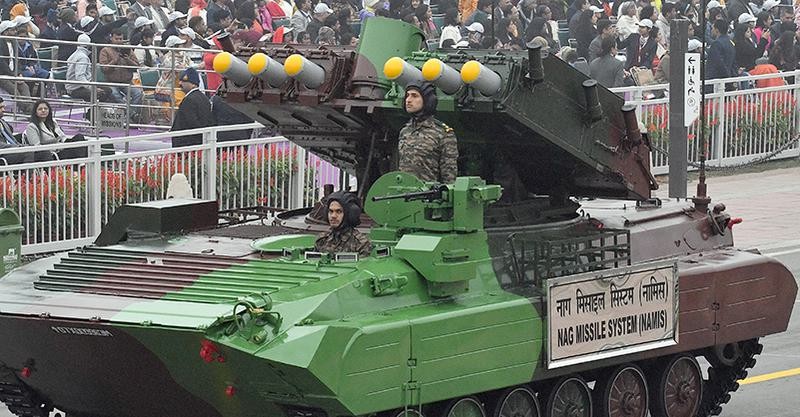
- 14 Jan 2025
In News:
The Defence Research and Development Organisation (DRDO) successfully conducted field evaluation trials of India's indigenous Anti-Tank Missile - Nag Mark 2 at the Pokhran Field Range in Rajasthan.
Overview of Nag Mk-2:
- Type: Third-generation, fire-and-forget anti-tank guided missile (ATGM).
- Development: Indigenous development by Defence Research and Development Organisation (DRDO) under the Integrated Guided Missile Development Programme (IGMDP).
- Functionality: Designed to neutralize modern armored threats, including those with Explosive Reactive Armour (ERA), using advanced fire-and-forget technology.
Technological Features:
- Fire-and-Forget Technology: Operators lock onto targets before launch, allowing the missile to autonomously track and engage targets, ensuring precision strikes.
- Lock-on After Launch: The missile can lock onto the target post-launch, providing flexibility in complex battlefield environments.
- Advanced Guidance System: Equipped with Imaging Infrared (IIR) seekers for enhanced accuracy, both during the day and at night.
Performance and Range:
- Effective Range: The missile has a range of 7 to 10 kilometers, a significant improvement over its predecessor, Nag Mk-1, which had a range of only 4 kilometers.
- Test Trials: Successfully destroyed all targets at both maximum and minimum ranges during the field evaluation trials at Pokhran Field Range, Rajasthan.
- Attack Mode: Includes a top-attack capability to target the vulnerable upper surfaces of armored vehicles, enhancing its effectiveness.
Platform and Integration:
- Launch Platform: The missile is launched from the NAMICA (Nag Missile Carrier) Version 2, a tank destroyer vehicle used by the Indian Army to launch anti-tank missiles.
- Versatility: Designed for integration with multiple platforms, enhancing operational flexibility in different combat scenarios.
Strategic and Operational Significance:
- Indigenous Defence Capability: Reduces India's dependence on foreign weapons systems, strengthening self-reliance in defense technology.
- Enhanced Battlefield Readiness: Provides the Indian Army with a cutting-edge weapon to counter modern armored vehicles, improving tactical advantages.
- Operational Effectiveness: The missile’s precision and ability to neutralize targets with minimal collateral damage make it an essential tool in modern warfare.
- Strategic Deterrence: Demonstrates India’s technological advancements in missile systems, signaling strength and deterrence to adversaries.
Exercise SURYA KIRAN
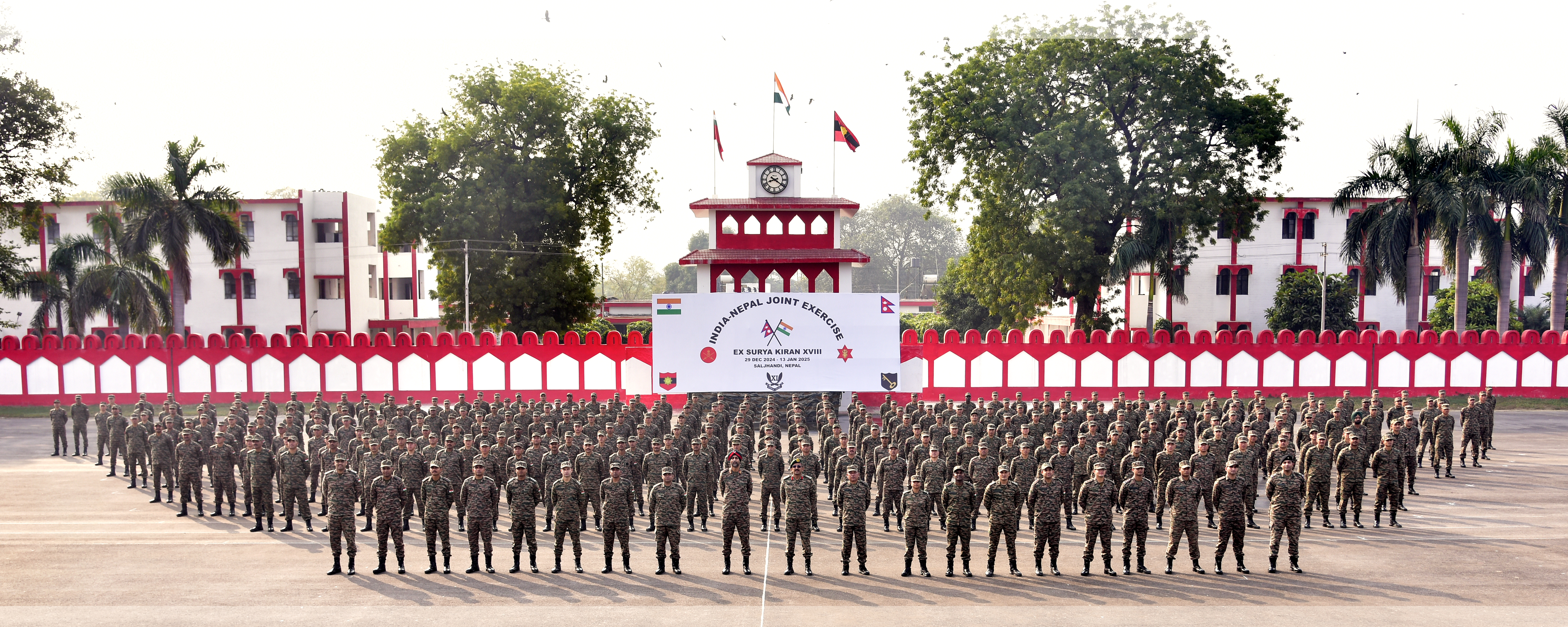
- 28 Dec 2024
In News:
Indian Army Contingent Departs for 18th Edition of Exercise SURYA KIRAN (India-Nepal Joint Military Exercise).
Key Highlights:
- Event Overview:
- Name: 18th Edition of Battalion-Level Joint Military Exercise SURYA KIRAN.
- Dates: 31st December 2024 to 13th January 2025.
- Location: Saljhandi, Nepal.
- Participants: Indian Army (334 personnel, led by a Battalion from the 11th Gorkha Rifles) and Nepal Army (Srijung Battalion).
- Objective of Exercise:
- Enhance interoperability in jungle warfare, counter-terrorism operations in mountainous terrain, and Humanitarian Assistance and Disaster Relief (HADR) under the UN Charter.
- Focus on operational preparedness, aviation training, medical aspects, and environmental conservation.
- Key Features:
- Training Focus: Improving combat skills and coordination to operate together in challenging situations.
- Exchange of Ideas: Soldiers from both nations will share best practices, enhance mutual understanding of operational procedures.
- Strengthening Bilateral Relations: Reinforces strong bonds of friendship, cultural linkages, and defense cooperation between India and Nepal.
- Significance:
- Historical Context: Exercise held alternately in India and Nepal since 2011.
- Enhances Combat Readiness: Prepares both armies to address shared security challenges and improve operational capabilities.
- Diplomatic Engagement: Fosters a productive professional environment between India and Nepal.
- Recent Developments:
- The exercise follows visits by General Upendra Dwivedi (Indian Army Chief) to Nepal and General Ashok Raj Sigdel (Nepali Army Chief) to India, strengthening military ties.
- Previous Editions:
- 17th Edition: Conducted in Pithoragarh, Uttarakhand (24th Nov - 7th Dec 2023).
11th ASEAN Defence Ministers’ Meeting-Plus (ADMM-Plus)
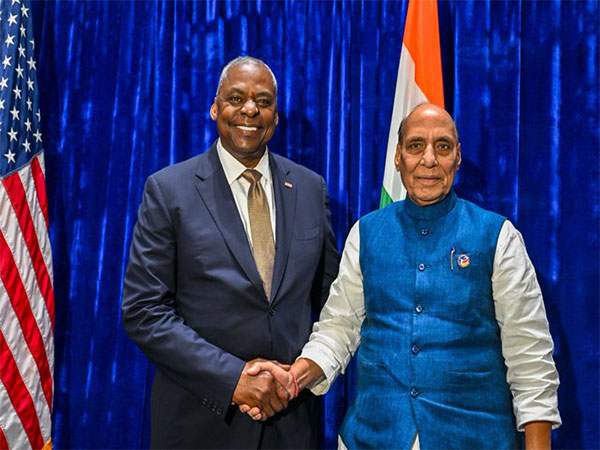
- 23 Nov 2024
In News:
The 11th ADMM-Plus held in Vientiane, Laos saw Union Defence Minister Rajnath Singh engage in discussions with his counterparts from the United States, Japan, and the Philippines.
Focus: The talks centered on strengthening defence partnerships, regional security, and enhancing cooperation among Indo-Pacific nations.
ASEAN Defence Ministers’ Meeting-Plus (ADMM-Plus):
- Platform for Dialogue: The ADMM-Plus is a key platform for ASEAN and its eight Dialogue Partners—Australia, China, India, Japan, New Zealand, Republic of Korea, Russia, and the United States.
- Establishment: The inaugural ADMM-Plus was held in HàN?i, Vietnam on 12 October 2010.
- Annual Meetings: Since 2017, the ADMM-Plus has met annually to enhance dialogue and cooperation amidst an increasingly complex regional security environment.
Objectives:
- Capacity Building: To aid ASEAN members in addressing shared security challenges.
- Promote Trust and Transparency: Enhance mutual trust and confidence between ASEAN and partner nations.
- Regional Peace and Stability: Focus on cooperation in defence and security to counter transnational security challenges.
- ASEAN Security Community: Contribute to realizing the ASEAN Security Community, as per the Bali Concord II, aiming for peace, stability, democracy, and prosperity in the region.
- Vientiane Action Programme: Facilitate ASEAN's efforts towards a peaceful, secure, and prosperous ASEAN with outward-looking relations with Dialogue Partners.
India-Algeria Strengthen Defence Ties
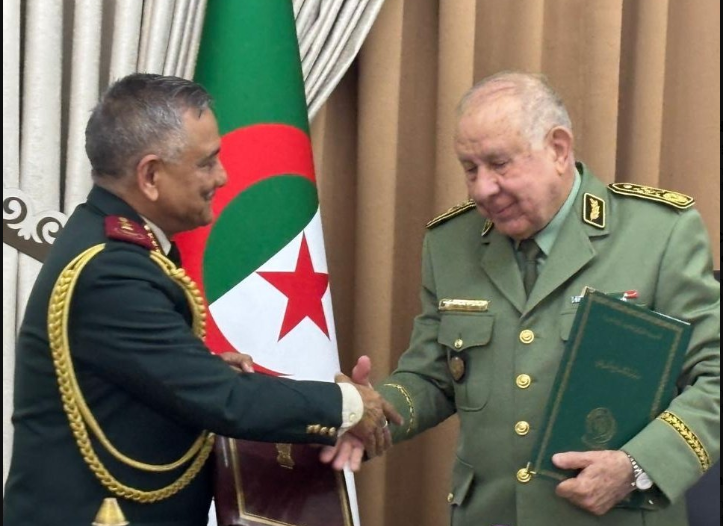
- 06 Nov 2024
In News:
- The Chief of Defence Staff (CDS) of India recently visited Algeria, culminating in the signing of a significant Memorandum of Understanding (MoU) on defence cooperation.
- Objective: The MoU aims to strengthen the strategic and military ties between India and Algeria.
Recent Developments in India-Algeria Relations
- Important Visit: The CDS’s visit coincided with Algeria’s 70th anniversary of its revolution, celebrated on November 1st, with military parades and ceremonies highlighting Algeria’s historical and political legacy.
- Defence Cooperation:
- India re-established its defence wing in Algeria, and Algeria reciprocated by considering the establishment of its defence wing in India.
- India emphasized its role as a “Vishwa Bandhu” (global partner) and offered to share defence expertise and experiences with Algeria.
- Strategic Discussion: The MoU aims to enhance mutual understanding, laying the foundation for long-term defence collaboration across multiple sectors, including manufacturing under India’s 'Make in India' and 'Make for the World' initiatives.
- Global Peace Support: CDS reiterated India’s commitment to peaceful conflict resolution and expressed support for Algeria’s defence interests.
Significant Areas of India-Algeria Relationship
- Diplomatic Relations:
- India and Algeria established diplomatic ties in July 1962, the same year Algeria gained independence from French colonial rule.
- India supported Algeria's liberation movement and both countries have maintained close ties as part of the Non-Aligned Movement.
- Bilateral Trade:
- Trade peaked at USD 2.9 billion in 2018 but dropped to USD 1.5 billion by 2021 due to COVID-19 and Algeria’s import restrictions.
- Trade rebounded in 2022, increasing by 24% to USD 2.1 billion.
- Exports from India (2023-24): Rice, pharmaceuticals, granite.
- Imports from Algeria: Petroleum oils, LNG, calcium phosphates.
- Bilateral Agreements:
- 2015 MoU: Between All India Radio (AIR) and Algerian National Radio for cooperation in broadcasting.
- 2018 Space Cooperation Agreement: Focuses on satellite technology for applications like crop forecasting and disaster management.
- Visa Waiver Agreement (2021): Diplomatic and official passport holders are exempt from visa requirements.
- Cultural Engagement:
- International Day of Yoga (2024): Celebrated in Algeria at the Jardin d’Essai du Hamma, attracting over 300 participants.
- Space Cooperation:
- The 2018 India-Algeria Space Cooperation Agreement focuses on joint space science, technology, and applications.
- India has launched four Algerian satellites (2016), and the 2022 Joint Committee Meeting expanded satellite capacity building efforts.
- Algeria’s space agency has engaged with ISRO on satellite applications like crop forecasting and disaster management.
- Indian Community in Algeria:
- Approximately 3,800 Indians live in Algeria, working in various sectors, including technical and semi-skilled roles.
- The community includes 13 Overseas Citizens of India (OCI), 10 Persons of Indian Origin (PIOs), and 15 Indian students.
Chanakya Defence Dialogue 2024
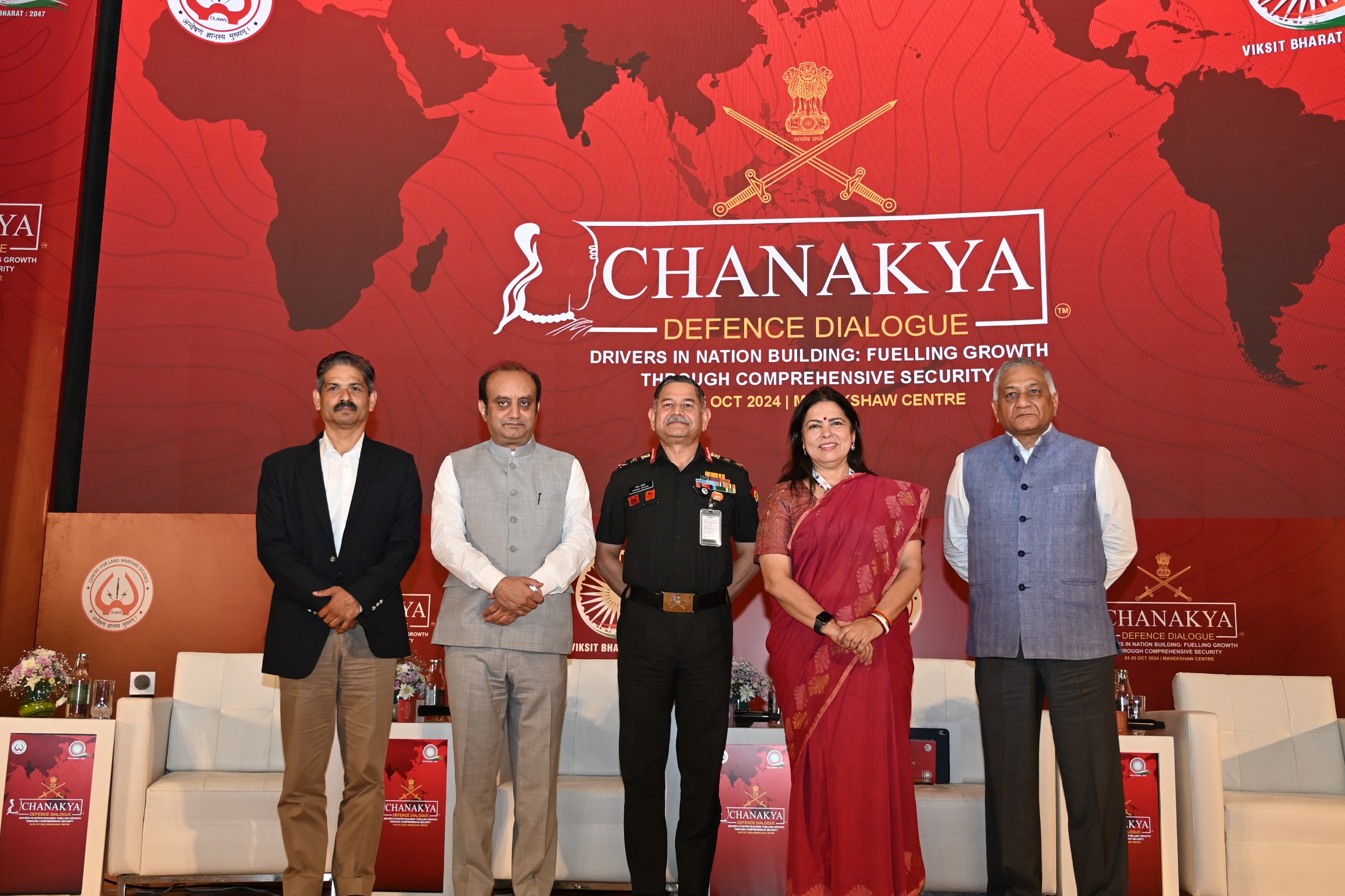
- 26 Oct 2024
In News:
- Recently, the Chanakya Defence Dialogue (CDD) 2024, second edition, was held at the Manekshaw Centre, New Delhi.
- Theme: "Drivers in Nation Building: Fueling Growth Through Comprehensive Security."
- Focus: Discussions on integrating national security into India's development trajectory and global strategy for a Viksit Bharat by 2047.
Key Objectives:
- The dialogue aimed to explore India’s strategic directions and development priorities by fostering discussions between policymakers, strategic thinkers, defence experts, and academia.
- Highlighted the link between national security and economic growth, stressing how security frameworks are vital for national progress.
Key Sessions and Discussions:
- Session 1: Social Cohesion and Inclusive Growth: Pillars of a Secure Nation:
- Focused on internal security, social unity, and inclusive development.
- Panelists discussed the role of community engagement, countering terrorism, and law enforcement reforms.
- Emphasized the need for integrating social progress and addressing challenges like separatism and terrorist narratives.
- Panelists called for evidence-based policies for equitable growth and stronger security frameworks to protect the country from internal threats.
- Session 2: Blurring Frontiers: The Convergence of Technology & Security:
- Addressed the intersection of technology and national security.
- Topics included AI, quantum computing, IoT, and blockchain for improving cyber resilience and data protection.
- Panelists emphasized the need to balance technological innovation with strong security measures, particularly in cybersecurity and critical infrastructure protection.
- Session 3: Ground-breakers: Shaping Land Warfare, Reflections for the Indian Army:
- Explored the integration of emerging technologies like AI, unmanned systems, and cyber warfare tools in enhancing military readiness.
- Focused on indigenous defense technologies under the Atmanirbhar Bharat initiative, promoting self-reliance and reducing dependency on foreign technologies.
- Emphasized multi-domain operations and the challenges of adapting to evolving security threats, especially from advanced cyber and space warfare.
Strategic Insights:
- Economic Growth & Security: The dialogue highlighted that national security and economic growth are interlinked, with a strong military infrastructure crucial for sustaining development.
- Role of Technology: Technological advancements like AI, space technology, and cybersecurity are pivotal for enhancing India's defense capabilities and strategic posture in a rapidly evolving global security landscape.
- Inclusive Security: Emphasized social cohesion and inclusive growth as key components of national security, acknowledging that a unified society contributes significantly to national resilience.
- Global Diplomacy: India’s global leadership in multilateral forums, its stance on peacekeeping, and its role in promoting sustainable development were discussed as part of the country’s soft power strategy.
Russia's Izdeliye 305 (LMUR) Missile
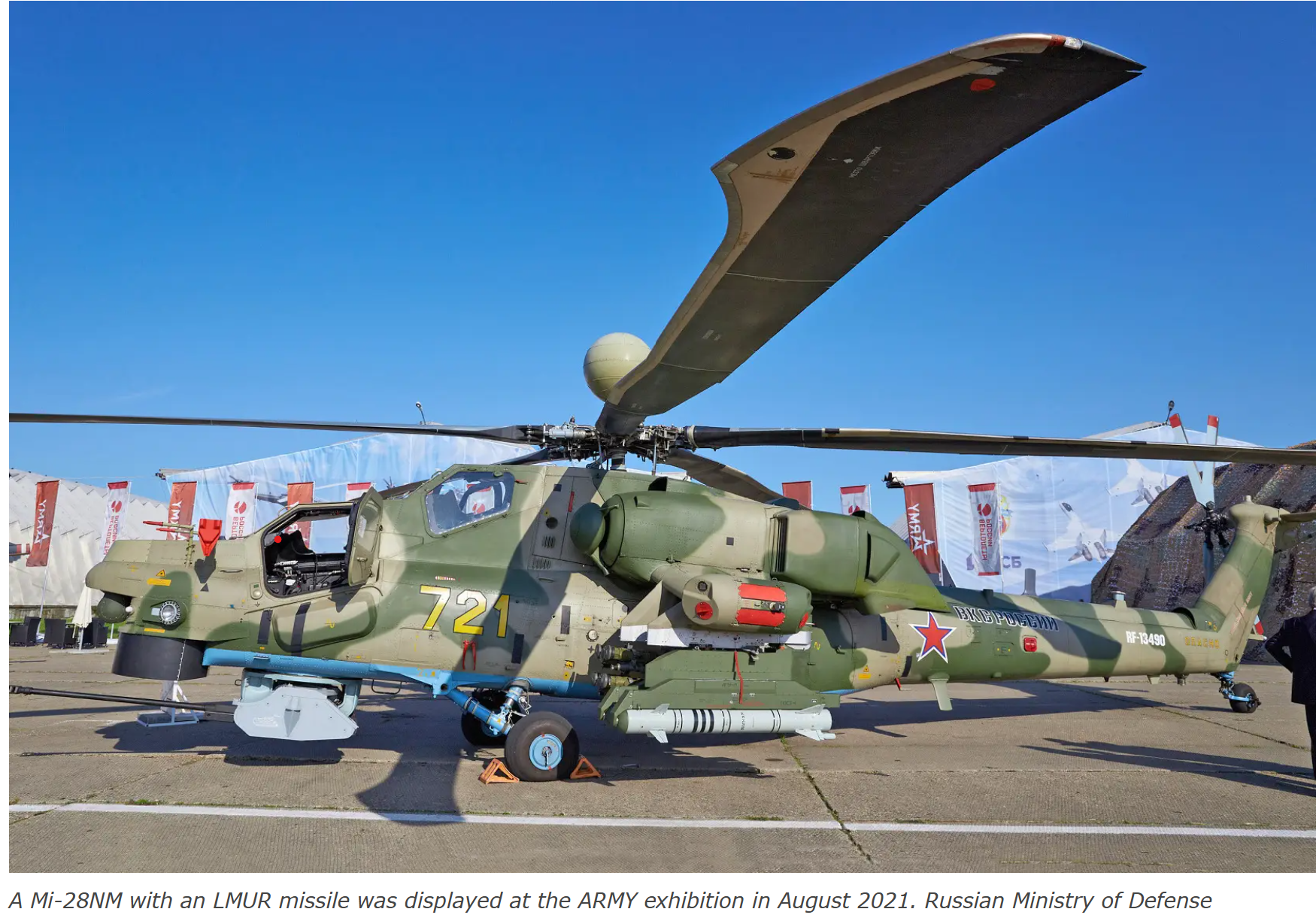
- 21 Oct 2024
In News:
Russian state corporation Rostec has claimed that its Light Multipurpose Guided Rocket, also known as Izdeliye 305 or “Product 305,” has demonstrated remarkable resistance to jamming and interference on the battlefield in Ukraine.
Missile Overview
- Name: Izdeliye 305 (Product 305), also known as LMUR (Light Multipurpose Guided Rocket)
- Primary Use: Deployed by Russia’s Mi-28NM and Ka-52M attack helicopters.
- Function: Designed to target and destroy armored vehicles, fortifications, pillboxes, and watercraft with high precision.
Key Features
- Sniper-Like Accuracy: The missile is touted for its exceptional precision in targeting, making it one of Russia’s most successful guided weapons.
- Resistance to Jamming: The missile’s control channel has shown remarkable resistance to enemy electronic warfare (EW) systems, making it effective even in contested environments.
- No instances of the missile's control channel being suppressed during the ongoing Ukraine conflict.
- Versatile Guidance Systems: The missile operates in several modes:
- Fire-and-Forget: The missile locks onto the target before launch and operates autonomously post-launch.
- Remote Control Mode: The operator guides the missile to the target after it locks onto coordinates and transmits live imagery to the operator’s screen.
- Inertial + Homing Mode: The missile initially flies inertially toward target coordinates, then activates its homing system for final target guidance.
- High Explosive Warhead: Equipped with a 25-kg high-explosive fragmentation warhead, the LMUR is effective against a variety of targets.
Technical Specifications
- Weight: 105 kg (231 lbs)
- Range: Up to 9 miles, double the range of traditional Russian anti-tank missiles, providing the tactical advantage of engaging from beyond line-of-sight.
- Warhead: 25 kg high-explosive fragmentation for effective target destruction.
- Guidance: A combination of inertial navigation, satellite positioning, thermal imaging, and a two-way communication channel for real-time control.
Deployment and Use
- Helicopter Integration: Primarily used on Mi-28NM and Ka-52M attack helicopters, and also on the Mi-8MNP-2 for special operations.
- Combat Experience:
- The missile was actively used in Ukraine where it played a key role in countering Ukraine’s NATO-backed counteroffensive operations.
- It was previously tested in Syria against various targets, showcasing its capabilities before full operational deployment in 2022.
Significance in Ukraine Conflict
- Impact on Ukrainian Forces: The missile’s long range and resistance to EW have made it a critical component of Russia’s aerial operations, hampering Ukraine’s battlefield progress, particularly against heavily fortified positions and NATO-backed counteroffensive efforts.
Strategic Advantage: The missile’s ability to engage targets from a distance while evading jamming attempts gives it a significant edge in modern warfare.
Naseem-Al-Bahr 2024
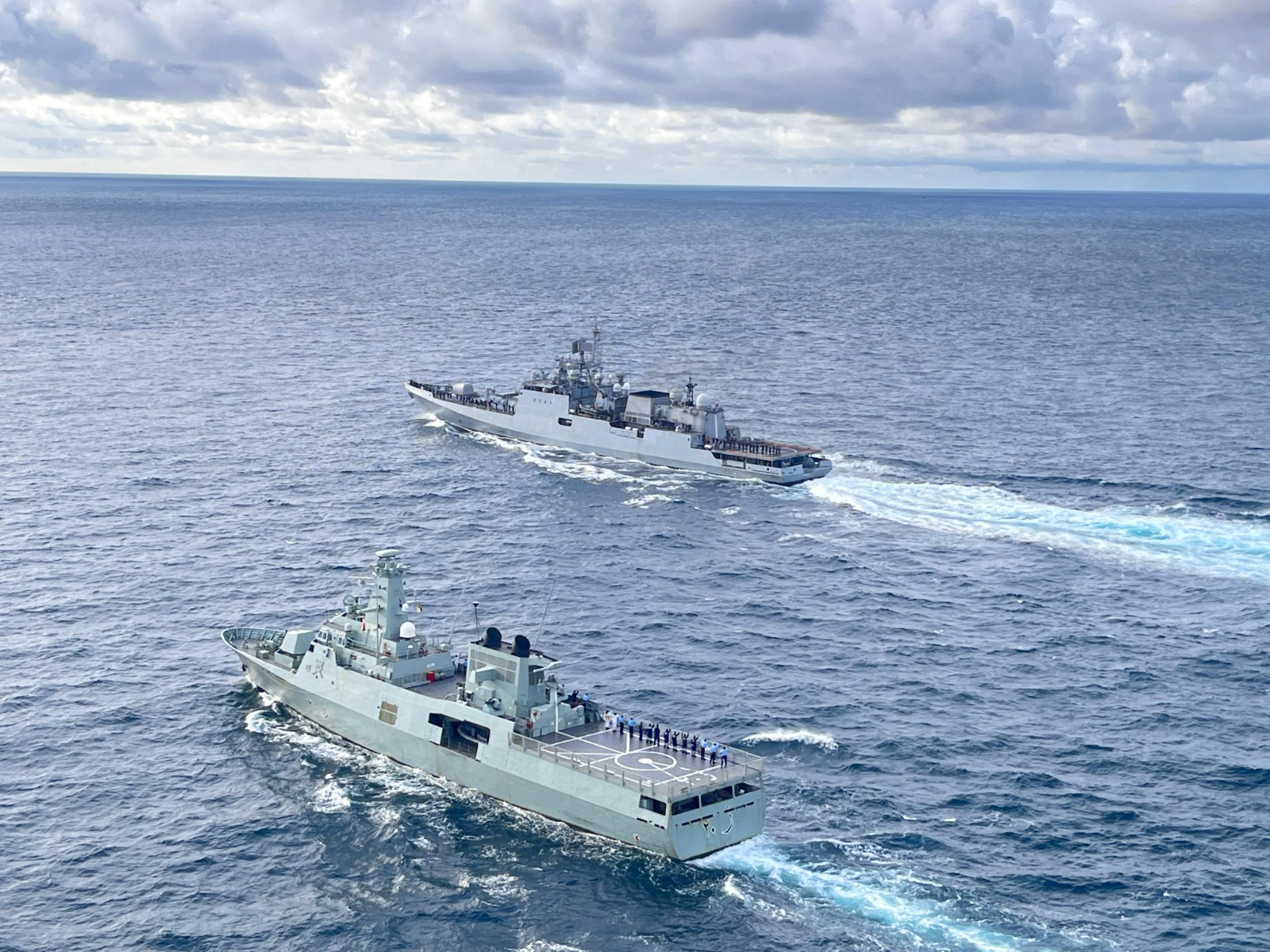
- 20 Oct 2024
In News:
Indo-Oman bilateral naval exercise Naseem-Al-Bahr was held in Goa from October 2024.
Naseem-Al-Bahr Exercise Overview
- Indian and Omani Participants:
- Indian Navy: INS Trikand (warship) and Dornier Maritime Patrol Aircraft.
- Royal Navy of Oman: Vessel Al Seeb.
- Initiation: Launched in 1993, marking a long-standing strategic partnership between India and Oman.
- Structure: The exercise is conducted in two phases:
- Harbour Phase:
- Professional Interactions: Subject Matter Expert Exchanges (SMEE), planning conferences.
- Social & Sports Engagements: Informal activities to foster mutual understanding.
- Sea Phase:
- Naval Operations:
- Gun firings at surface inflatable targets.
- Close-range anti-aircraft firings.
- Replenishment at Sea Approaches (RASAPS).
- Helicopter Operations: INS Trikand’s helicopter performed cross-deck landings and Vertical Replenishment (VERTREP) with RNOV Al Seeb.
- Aircraft Support: Dornier aircraft provided Over-the-Horizon Targeting (OTHT) data to enhance operational coordination.
- Naval Operations:
- Harbour Phase:
Key Highlights of the 2024 Exercise
- Interoperability: The exercise focused on improving operational coordination and enhancing mutual understanding of naval practices.
- Cohesion: The Indian Navy Sea Riders embarked on RNOV Al Seeb to further strengthen the bilateral relationship.
Strategic Significance
- Strengthening Ties: Naseem-Al-Bahr reaffirms the strong strategic relationship between India and Oman.
- Regional Collaboration: This exercise exemplifies India's growing collaboration with like-minded nations in the Indian Ocean Region (IOR).
- Broader Defence Relations:
- Oman is the first GCC country to conduct such bilateral naval exercises with India.
- Both countries also engage in other defence exercises:
- Army: Al Najah.
- Air Force: Eastern Bridge.
Trade Relations Between India and Oman (2022):
- Oil: India is the second-largest market for Oman's crude oil exports, following China.
- Non-oil Exports: India is Oman's fourth-largest market for non-oil exports, after UAE, US, and Saudi Arabia.
- Imports: India is the second-largest source of Oman's imports, following the UAE.
- Ongoing Trade Agreement: Both nations are currently negotiating a trade agreement to further boost bilateral economic cooperation.
Next Generation Missile Vessels (NGMV)

- 19 Oct 2024
In News:
GE’s LM2500 Marine Engines to Power Indian Navy’s Next Generation Missile Vessels (NGMV)
Key Highlights:
- Engine Selection:
- General Electric’s LM2500 marine gas turbines have been chosen to power the Indian Navy's Next Generation Missile Vessels (NGMV), currently being built by Cochin Shipyard Limited (CSL).
- Project Details:
- Number of Vessels: Six NGMVs are under construction.
- Contract Value: ?9,805 crore, awarded by the Defence Ministry.
- Delivery Schedule: The first deliveries are expected to commence in March 2027.
- Key Components and Suppliers:
- GE Aerospace will deliver six LM2500 engine kits to Hindustan Aeronautics Limited (HAL) for assembly and testing at their Industrial and Marine Gas Turbine Division in Bengaluru.
- GE will also supply the composite base, enclosure, and a full set of auxiliary systems for the gas turbines.
- LM2500 Marine Gas Turbine:
- The LM2500 turbine is known for its reliability and high power output, making it ideal for the NGMV mission.
- Top Speed: 35 knots (64 km/h).
- It is central to the propulsion system, meeting the stealth and power demands of the new missile vessels.
- Capabilities of NGMVs:
- Role: Designed for offensive missions, the NGMVs will be equipped for anti-surface warfare, maritime strike operations, and sea denial.
- Speed & Stealth: Capable of speeds up to 35 knots while maintaining stealth, these vessels will be difficult for enemy ships to detect.
- Weapons: They will carry a variety of anti-surface weapons, including the BrahMos supersonic cruise missile, loitering munitions, unmanned vehicles, and other guided weapons.
- Operational Roles:
- Offensive: The NGMVs will engage in attacking enemy warships, merchant ships, and land-based targets.
- Defensive: They will also be used for local naval defense operations, including the seaward defense of offshore development areas and defending choke points.
- Strategic Importance:
- The NGMVs will significantly enhance India’s maritime strike capability and provide a formidable presence in strategic sea routes, especially in regions like choke points and offshore development areas.
- Cochin Shipyard’s Role:
- After successfully constructing INS Vikrant, India’s first indigenous aircraft carrier, CSL is now focusing on the NGMV project, along with building anti-submarine warfare shallow water crafts for the Indian Navy, currently in various stages of construction.
- Partnerships:
- In 2023, GE Aerospace and HAL signed a Memorandum of Understanding (MoU) to expand their collaboration on marine gas turbines, including assembly, inspection, and testing (AIT) of the LM500 turbines.
- To date, GE Aerospace has delivered 24 marine gas turbine kits to HAL, supporting India’s Make-In-India initiative.
- Global Impact:
- The LM2500 gas turbine is used by 714 vessels globally, reinforcing its reputation for reliability and availability in critical maritime defense systems.
THAAD Missile Defence System
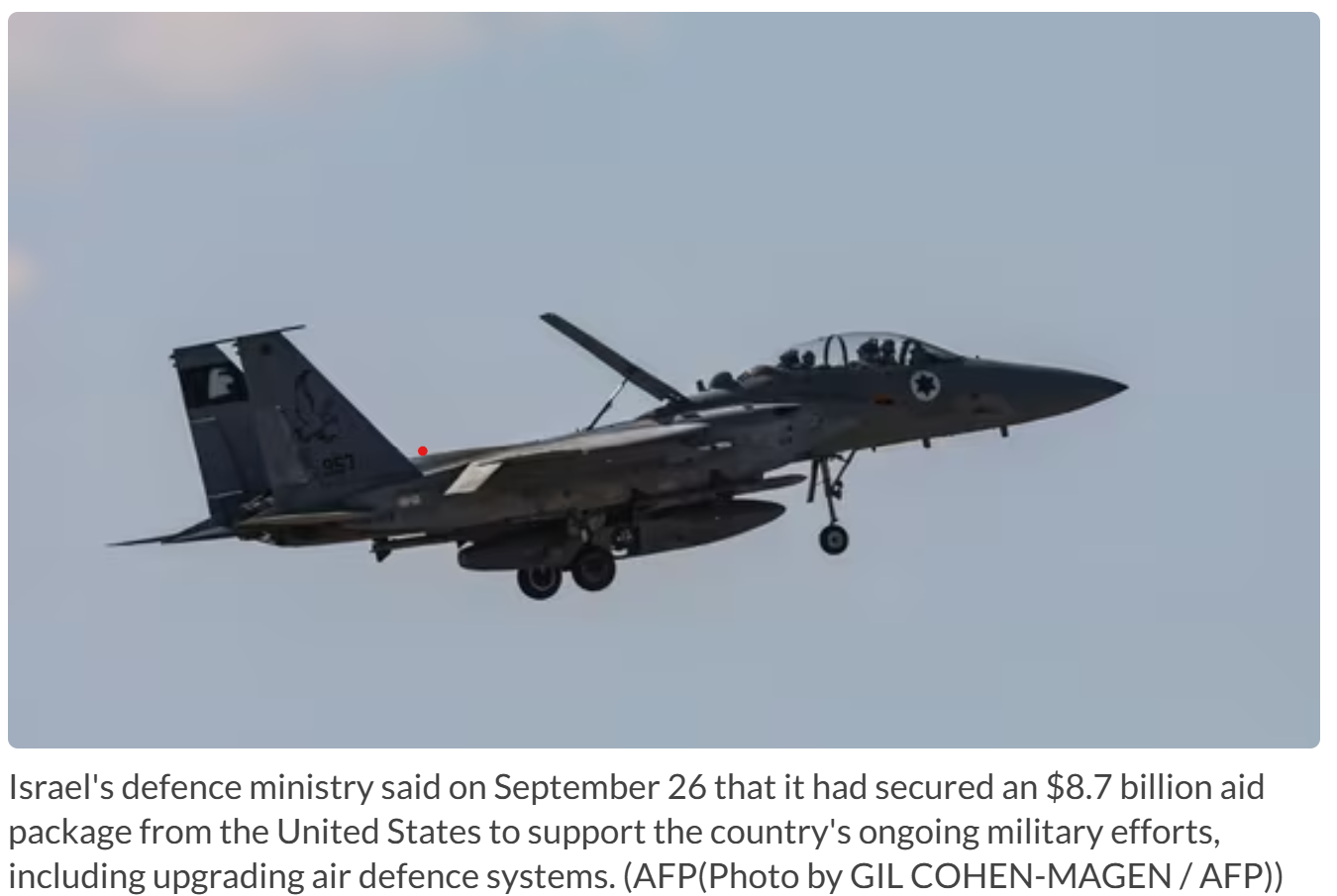
- 14 Oct 2024
In News:
The US pledged its THAAD missile defence system as well as several troops to Israel after Iran warned the country to not get involved.
In a new boost to Israeli forces, the United States will send a Terminal High Altitude Area Defence battery (THAAD) and troops to Israel amid its ongoing offensive against the Hezbollah.
THAAD battery:
- The Terminal High Altitude Area Defence system (THAAD) is an American anti-ballistic missile defence system. It can shoot down short, medium and intermediate range missiles in it's sphere.
- The THAAD has a “hit to kill” approach which blasts missiles as they before they enter their target zone during their descent.
- The THAAD was developed by the US after their experience of Iraq's Scud missile attacks during the Persian Gulf War in 1991. Out of a total of 88 Scud missiles, Iraq fired 42 into Israel and 46 into Saudi Arabia, killing many American soldiers in barracks as well.
- The first proposal for the THAAD was submitted to the US Defence Ministry in 1987 and a series of tests resulting in failures, finally led to a successful version in 1999.
- In 2008, the US deployed an early missile warning radar, a part of the THAAD system to Israel. Similar deployments were also made in 2012 and 2019, aiding Israel's ability to emerge as a military power in the Middle East.
Maritime Exercise Malabar 2024
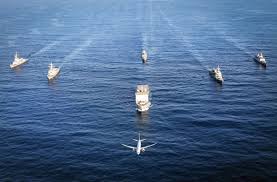
- 07 Oct 2024
In News:
Maritime Exercise Malabar 2024, Commencing at Visakhapatnam on 08 Oct Hosted by India, USA, Australia and Japan in Participation.
Background
- Origins: Initiated in 1992 as a bilateral naval drill between the United States and Indian Navy.
- Evolution: Has grown into a key multilateral exercise aimed at enhancing interoperability and addressing maritime challenges in the Indian Ocean and Indo-Pacific region.
Participating Naval Assets
- India: Various platforms, including:
- Guided missile destroyers
- Multi-purpose frigates
- Submarines
- Fixed-wing maritime reconnaissance aircraft
- Fighter aircraft and helicopters
- Australia:
- HMAS Stuart (Anzac Class Frigate)
- MH-60R helicopter
- P-8 Maritime Patrol Aircraft
- United States:
- USS Dewey (Arleigh Burke-Class Destroyer)
- Integral helicopter
- P-8 Maritime Patrol Aircraft
- Japan:
- JS Ariake (Murasame-class Destroyer)
Focus Areas of the Exercise
- Operational Enhancements:
- Discussions on special operations
- Surface, air, and anti-submarine warfare
- Subject Matter Expert Exchange (SMEE)
- Maritime Operations:
- Anti-submarine warfare
- Surface warfare
- Air defense exercises
- Emphasis: Improving situational awareness in the maritime domain.
Special Events
- Distinguished Visitors’ Day: Scheduled for October 9, 2024.
- Hosted by Vice Admiral Rajesh Pendharkar, Flag Officer Commanding-in-Chief, Eastern Naval Command.
- Joint Press Conference: Co-chaired by heads of delegations from all participating nations during the Harbour Phase.
Significance
- Comprehensive Exercise: Malabar 2024 is expected to be the most detailed edition to date, featuring complex operational scenarios and enhanced cooperation among the naval forces of the participating countries.GS Paper
DefConnect 4.0

- 07 Oct 2024
In News:
- DefConnect 4.0 was inaugurated by Union Defence Minister Rajnath Singh on October 7, 2024, at Manekshaw Centre, Delhi Cantonment.
- Organizer: Hosted by Innovations for Defence Excellence - Defence Innovation Organisation (iDEX-DIO) under the Department of Defence Production, Ministry of Defence.
Purpose and Focus
- Advancing Indigenous Innovation: Aims to enhance India’s defense ecosystem by promoting self-reliant defense technologies.
- Participants: Involves Armed Forces, Defence Public Sector Undertakings (DPSUs), start-ups, MSMEs, academia, incubators, investors, and policymakers.
Technology Showcase
- Exhibitions: iDEX innovators showcased cutting-edge technologies, products, and capabilities.
- Collaboration and Dialogue: Encourages partnerships and discussions to drive defense innovation and long-term collaborations.
Special Sessions
- Budget Insights: Focused on key takeaways from recent budget announcements impacting the defense innovation ecosystem.
- Semiconductor Domain: Highlighted initiatives and opportunities within the semiconductor sector.
Path Forward: Vision for 2047
- Viksit Bharat Goal: Aligns with India’s vision of becoming a global leader in defense innovation by 2047.
- Government Initiatives: Supports local talent and indigenous solutions through programs like iDEX.
iDEX Impact
- Defence India Start-up Challenges: 11 editions launched, garnering over 9,000 applications.
- Collaborations: Engages with over 450 start-ups/MSMEs on significant defense projects.
- Contribution to Self-Reliance: Supports the goal of achieving self-reliance in the defense and aerospace sectors.
Very Short Range Air Defence System (VSHORAD)
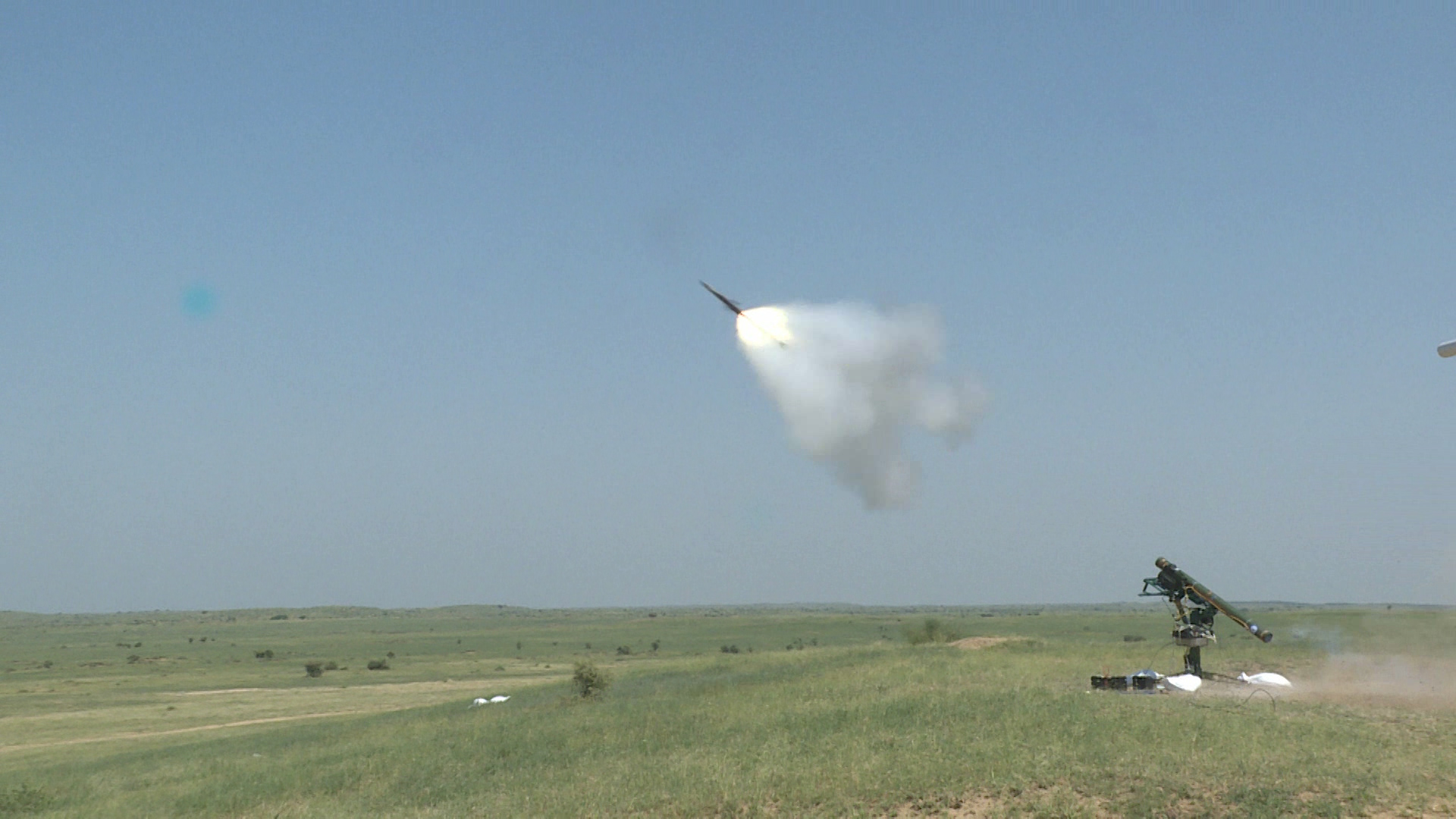
- 06 Oct 2024
In News:
DRDO completed development trials of the 4th Generation miniaturised Very Short Range Air Defence System (VSHORAD).
Key Details:
- Trial Location: Conducted at Pokhran Field Firing Ranges, Rajasthan.
- Importance: VSHORAD addresses the Indian Army's need to replace legacy Igla systems, with past efforts making little progress.
- Recent Procurement: Army acquired small volumes of Igla-S through emergency procurement.
- Production Collaboration: Two production agencies involved in Development cum Production Partner (DcPP) mode for VSHORAD missiles.
- Trial Dates: Successful tests held on October 3 and 4, 2024.
Key Performance Metrics:
- Maximum Range and Altitude: Interception against high-speed aerial targets.
- Hit-to-Kill Capability: Demonstrated success in engaging targets in various scenarios (approaching, receding, crossing).
System Overview:
- Type: Fourth generation man-portable air defence system (MANPADS).
- Developer: Research Centre Imarat (RCI) in collaboration with other DRDO labs and industry partners.
Capabilities:
- Designed to neutralise low altitude aerial threats at short ranges.
- Features include Dual-band IIR Seeker, miniaturised Reaction Control System, and integrated avionics.
- More portable and lightweight than existing missile systems in the Army's arsenal.
Joint Military Exercise KAZIND-2024
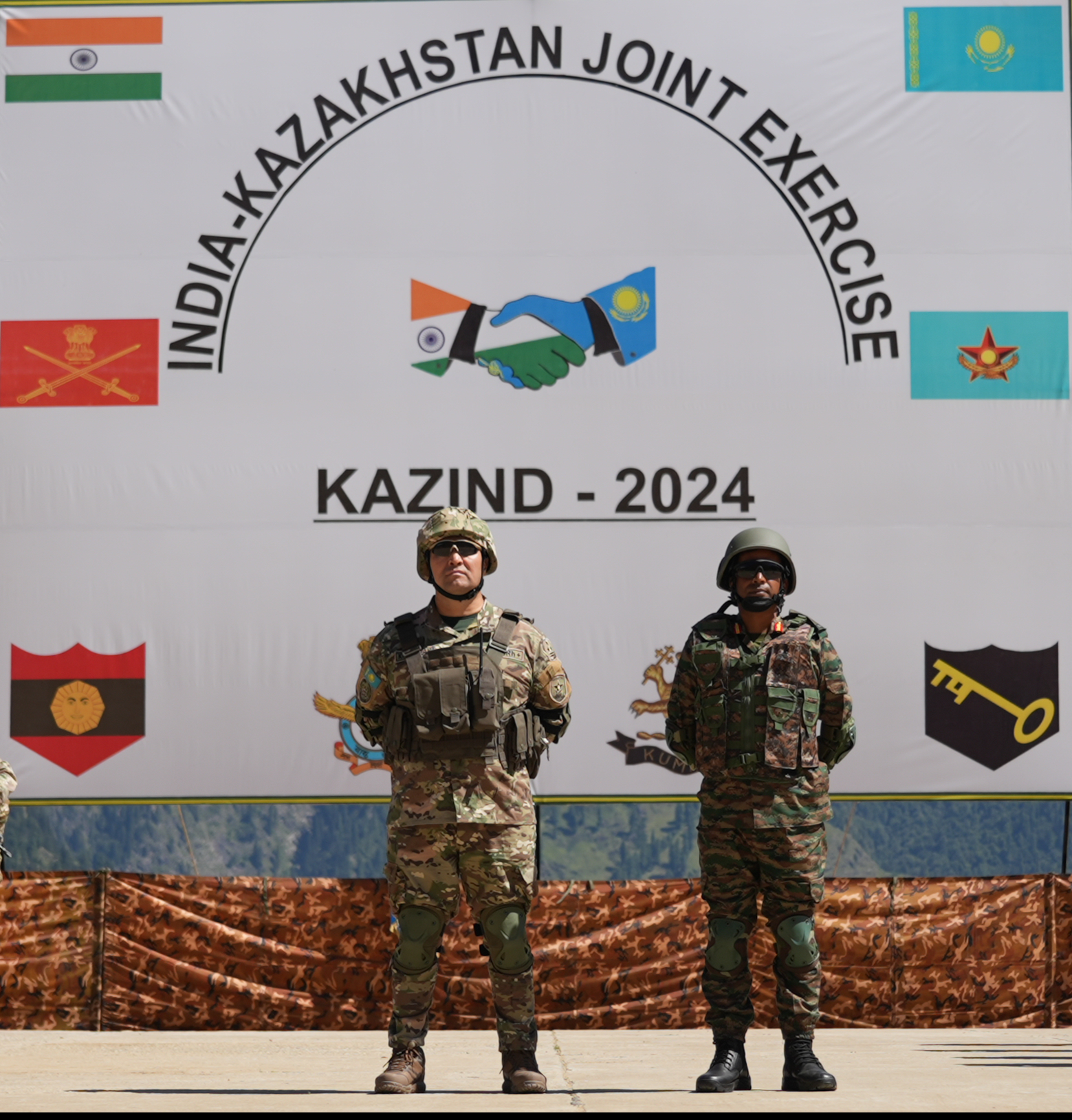
- 01 Oct 2024
In News:
The 8th edition of the India-Kazakhstan Joint Military Exercise, KAZIND-2024, has commenced in Auli, Uttarakhand, running from September 30 to October 13, 2024.
Key Details:
- Joint Exercise KAZIND-2024 has been held annually since 2016.
- Last edition of the Joint Exercise was held at Otar, Kazakhstan from 30th October to 11th November 2023.
Participants:
- India:
- 120 personnel from KUMAON Regiment of the Indian Army
- Additional support from other arms and Indian Air Force
- Kazakhstan:
- Personnel primarily from Land Forces and Airborne Assault Troopers
Aim:
- Enhance joint military capability for counter-terrorism operations
- Focus on sub-conventional scenarios under Chapter VII of the UN Charter
Focus Areas:
- Operations in semi-urban and mountainous terrains
- High physical fitness levels
- Rehearsal and refinement of tactical drills
- Sharing best practices
Tactical Drills:
- Joint response to terrorist actions
- Establishment of a Joint Command Post
- Creation of an Intelligence and Surveillance Centre
- Securing helipad/landing sites
- Combat free fall and Special Heliborne Operations
- Cordon and Search operations
- Employment of drones and counter-drone systems
Outcomes Expected:
- Sharing of tactics, techniques, and procedures for joint operations
- Development of interoperability between the two armies
- Strengthening of bonhomie and camaraderie
- Enhancement of defense cooperation and bilateral relations between India and Kazakhstan.
Samudra Pratap
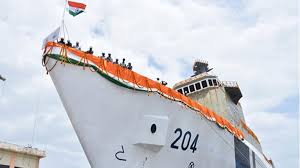
- 02 Sep 2024
In News
Recently, the Indian Coast Guard (ICG) proudly launched the first indigenously built Pollution Control Vessel, ‘Samudra Pratap’, in Goa.
Key Highlights of the Launch
- Vessel Details:
- Built by Goa Shipyard Limited (GSL), the vessel is specifically designed to combat oil spills along India’s coastlines.
- Dimensions: Length: 114.5m, Breadth: 16.5m, Displacement: 4170 T.
- The keel laying ceremony took place on November 21, 2022.
- Contract and Construction: GSL signed a contract worth Rs 583 crores for the construction of two Pollution Control Vessels for the ICG. This marks the first instance of such vessels being designed and built entirely in India.
- Significance of the Vessel: ‘Samudra Pratap’ stands as a testament to India's shipbuilding capabilities, showcasing GSL's expertise in producing advanced Pollution Control Vessels and reinforcing India's commitment to indigenization in defense manufacturing.
Project NAMAN
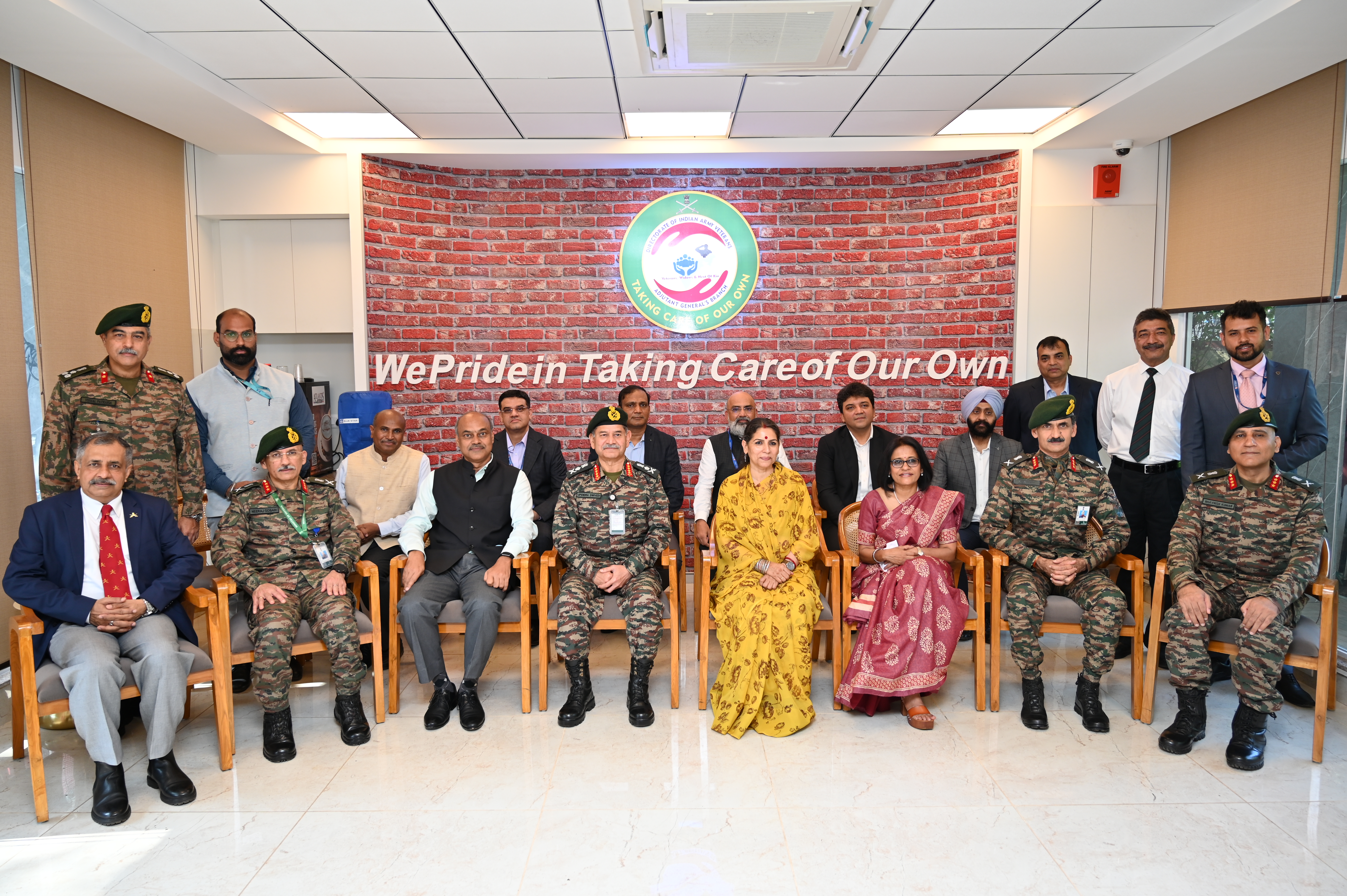
- 02 Sep 2024
In News:
- The Indian Army launched the first phase of Project NAMAN, aimed at supporting Defence Pensioners, Veterans, and their families.
- Key Features of Project NAMAN:
- Implements the SPARSH (System for Pension Administration Raksha) digital pension system.
- Streamlines pension processes and provides accessible facilitation points for Veterans and Next of Kin (NOK).
- Importance:
- Ensures care and support for veterans and their families.
- Services extended to residents of military stations and surrounding localities.
- Establishment of Common Service Centres (CSCs):
- Tripartite MoU signed between:
- Indian Army’s Directorate of Indian Army Veterans
- CSC e-Governance India Limited
- HDFC Bank Limited
- CSCs provide:
- SPARSH-enabled pension services
- Government to Citizen (G2C) services
- Business to Consumer (B2C) services
- Tripartite MoU signed between:
- Phase One Deployment:
- 14 CSCs established in key locations: New Delhi, Jalandhar, Leh, Dehradun, Lucknow, Jodhpur, Bengdubi, Gorakhpur, Jhansi, Secunderabad, Saugor, Guntur, Ahmedabad, Bangalore.
- Future expansion plans for approximately 200 centres nationwide in the next 2-3 years.
- Infrastructure Support:
- HDFC Bank provided necessary IT infrastructure.
- Local military stations contributed physical facilities.
- Community Engagement:
- Concept developed based on feedback from the Defence community.
- Promotes camaraderie among serving and retired Armed Forces personnel.
- Management of CSCs:
- Each CSC managed by a Village Level Entrepreneur (VLE) selected from veterans or NOKs by Local Military Authorities (LMAs).
- VLEs receive training from CSC e-Governance India Limited.
- HDFC Bank offers monthly grants of ?20,000 for the first 12 months to support VLEs.
- Conclusion:
- Project NAMAN reflects the Indian Army's commitment to veteran welfare.
- Offers SPARSH-centric services and entrepreneurial opportunities for Veterans and NOKs, empowering them to contribute to their communities.
ROBOTIC MULES AND HIGH-ALTITUDE INNOVATIONS IN THE ARMY
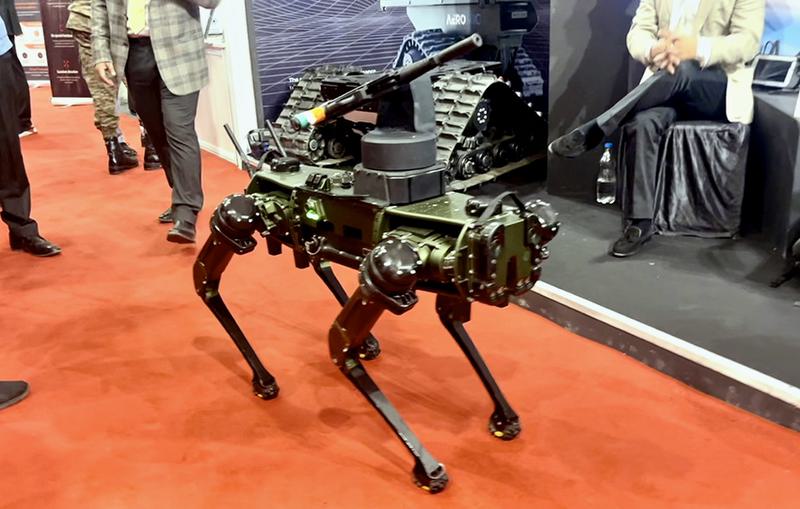
- 24 Sep 2024
In News:
The Army has inducted 100 robotic mules, known as Multi-Utility Legged Equipment (MULE), under the fourth tranche of emergency procurements (EP).
- Purpose: These robotic mules are designed for surveillance and transporting light loads across challenging terrains, especially in high-altitude areas.
- Specifications:
- Endurance: Capable of operating for up to three years.
- Temperature Range: Functions effectively in extreme temperatures from -40°C to +55°C.
- Payload Capacity: Can carry up to 15 kg.
- Mobility: Can climb stairs, steep hills, and traverse obstacles; waterproof and able to cross rivers.
- Sensing Abilities: Equipped with electro-optics and infrared capabilities for object recognition.
- Control Mechanisms: Operable via an easy-to-use remote control, Wi-Fi, or Long-Term Evolution (LTE) connections.
- Mission Programming: Can be programmed for specific missions using waypoints or pre-recorded tasks.
- Combat Integration: Capable of integration with small arms for military applications.
- Logistics Drones: Logistics drones are currently undergoing trials to enhance support and movement in forward areas, particularly in high-altitude conditions.
- High-Altitude Habitat Evaluation: A new tent designed for extreme cold environments (operating at temperatures down to -40°C) is under evaluation. This tent, called Peak Pods, is intended for use in sub-zero conditions.
- Evaluation Locations: The tent has been tested in three high-altitude sites:
- Leh (11,500 feet)
- Daulat Beg Oldie (16,700 feet)
- Durbuk (12,500 feet)
- Significance: These advancements reflect the Army's focus on technological innovations to enhance operational capabilities in high-altitude areas, especially following the 2020 stand-off with China in Eastern Ladakh.
- Funding and Timelines: The EP process allows contracts up to ?300 crore, with a requirement for delivery within one year.
Chamran-1 satellite
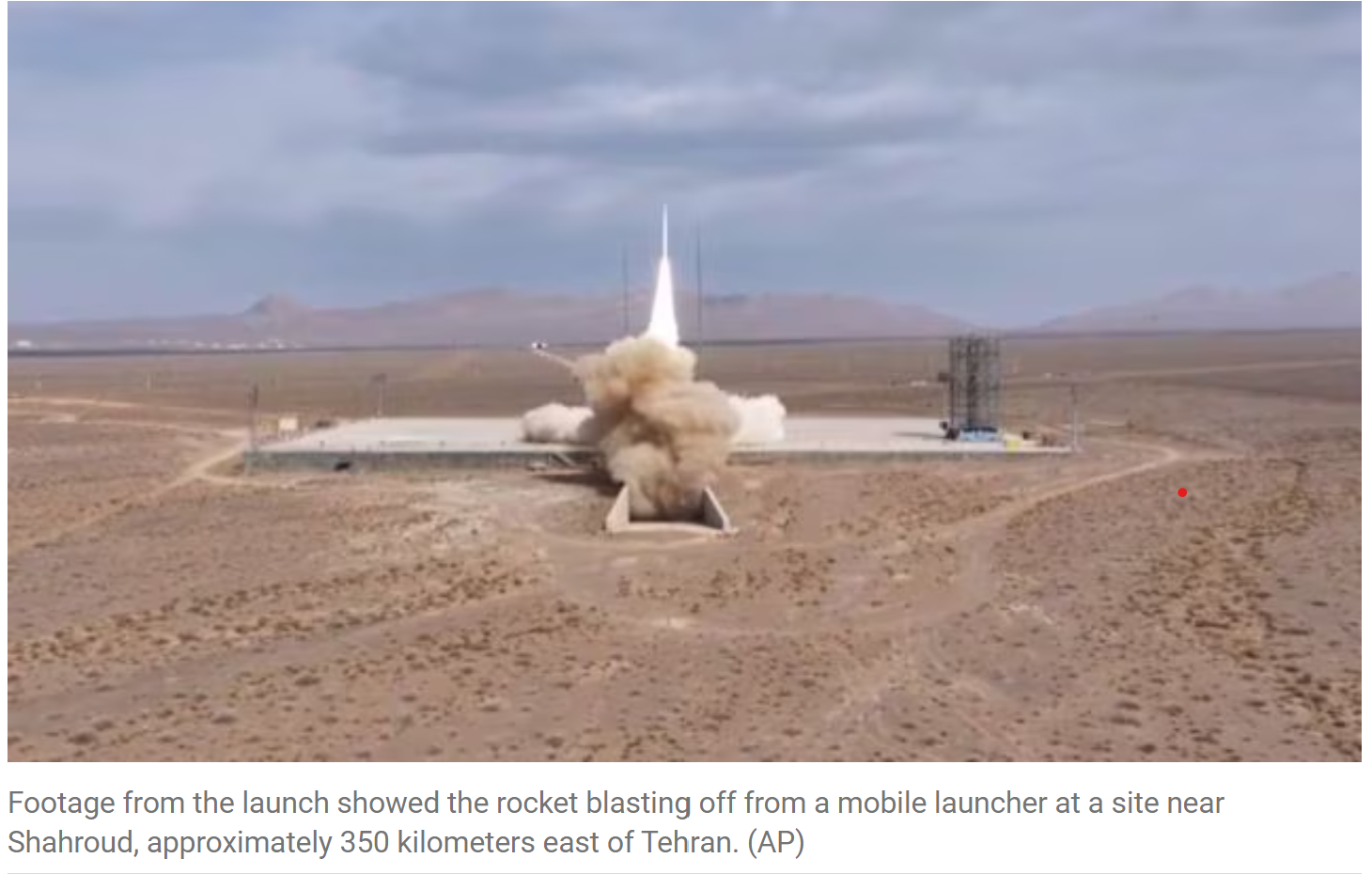
- 15 Sep 2024
In News:
Iran successfully launched its Chamran-1 research satellite into orbit, utilising the Qaem-100 rocket developed by the paramilitary Revolutionary Guard.
Key Highlights:
- Satellite Details: Chamran-1, a research satellite, was designed and manufactured by Iranian engineers at Iran Electronics Industries (SAIran) in collaboration with the Aerospace Research Institute and private firms. It weighs approximately 60 kilograms.
- Launch Vehicle: The satellite was launched into orbit using the Ghaem-100, Iran's first three-stage solid-fuel space launch vehicle (SLV), developed by the Aerospace Force of the Islamic Revolutionary Guard Corps (IRGC).
- Mission Objectives: The primary mission of Chamran-1 is to test hardware and software systems for validating orbital maneuver technology. Additionally, it aims to assess the performance of cold gas propulsion subsystems and evaluate navigation and attitude control subsystems.
- Orbit Details: The satellite was placed into a 550-kilometer (341 miles) orbit above Earth.
What are Intercontinental ballistic missiles?
- Intercontinental ballistic missiles (ICBMs) are a type of ballistic missile with a range greater than 5,500 kilometers and are primarily designed to deliver nuclear warheads.
- They can carry conventional, chemical, and biological weapons, although the latter types have rarely been deployed on ICBMs.
- The United States, Russia, China, France, India, the United Kingdom, Israel, and North Korea are known to possess operational ICBMs, with Pakistan being the only nuclear-armed state that does not have them.
India-Maldives Defence Talks

- 07 Sep 2024
In News:
- India and the Maldives held their first defence talks since India withdrew its military personnel early this year.
Significance of Talks:
- The dialogue is notable given recent tensions in bilateral relations. Relations soured after President Mohamed Muizzu's election on an "India Out" platform, leading to the withdrawal of Indian troops. The last defence cooperation dialogue was held in March 2023 under President Ibrahim Solih.
Discussion Topics:
-
- Expediting ongoing defence cooperation projects.
- Planning forthcoming bilateral military exercises.
- Enhancing high-level exchanges and capability development.
Context of Tensions:
-
- Mohamed Muizzu, who took office in November 2023, had called for the removal of Indian military personnel, a significant shift from the previous administration’s stance.
- India agreed to withdraw 80 military personnel between March and May 2024. Indian technical personnel now operate key equipment like helicopters and a Dornier aircraft in the Maldives.
Recent Developments:
-
- Maldives Foreign Minister Moosa Zameer visited India in May.
- President Muizzu attended PM Narendra Modi’s swearing-in ceremony in June.
- In August, Indian External Affairs Minister S. Jaishankar visited the Maldives to reaffirm bilateral ties.
Historical Defence Cooperation:
-
- India gifted a Dornier aircraft to the Maldives in 2020 and a patrol vessel in 2019.
- India provided a coastal radar system last year and laid the foundation for the 'Ekatha Harbour' project, enhancing Maldivian Coast Guard capabilities.
Ongoing Projects:
-
- Greater Male Connectivity Project (GMCP) - a $500 million initiative financed by India.
- Building a new Coast Guard base at Uthuru Thilafalhu (UTF) atoll.
- India’s grant for High Impact Community Development Projects (HICDPs).
Strategic Importance:
-
- For Maldives: India is a key security partner and crisis responder, with historical assistance during emergencies (Operation Neer, Vaccine Maitri). Maldives seeks to restore Indian tourist numbers, vital for its economy.
- For India: The Maldives is crucial to India's Neighbourhood First Policy and Vision SAGAR. Its strategic location between major Indian Ocean chokepoints makes it a vital partner for maritime security and countering China's influence.
Recent Changes:
-
- The Muizzu government decided not to renew a 2019 MoU for hydrographic surveying with India, ending joint hydrographic surveys conducted under the pact.
Travel and Trade:
-
- Both countries benefit from an open skies arrangement and visa-free access for tourism, medical, and business purposes
Exercise AL NAJAH
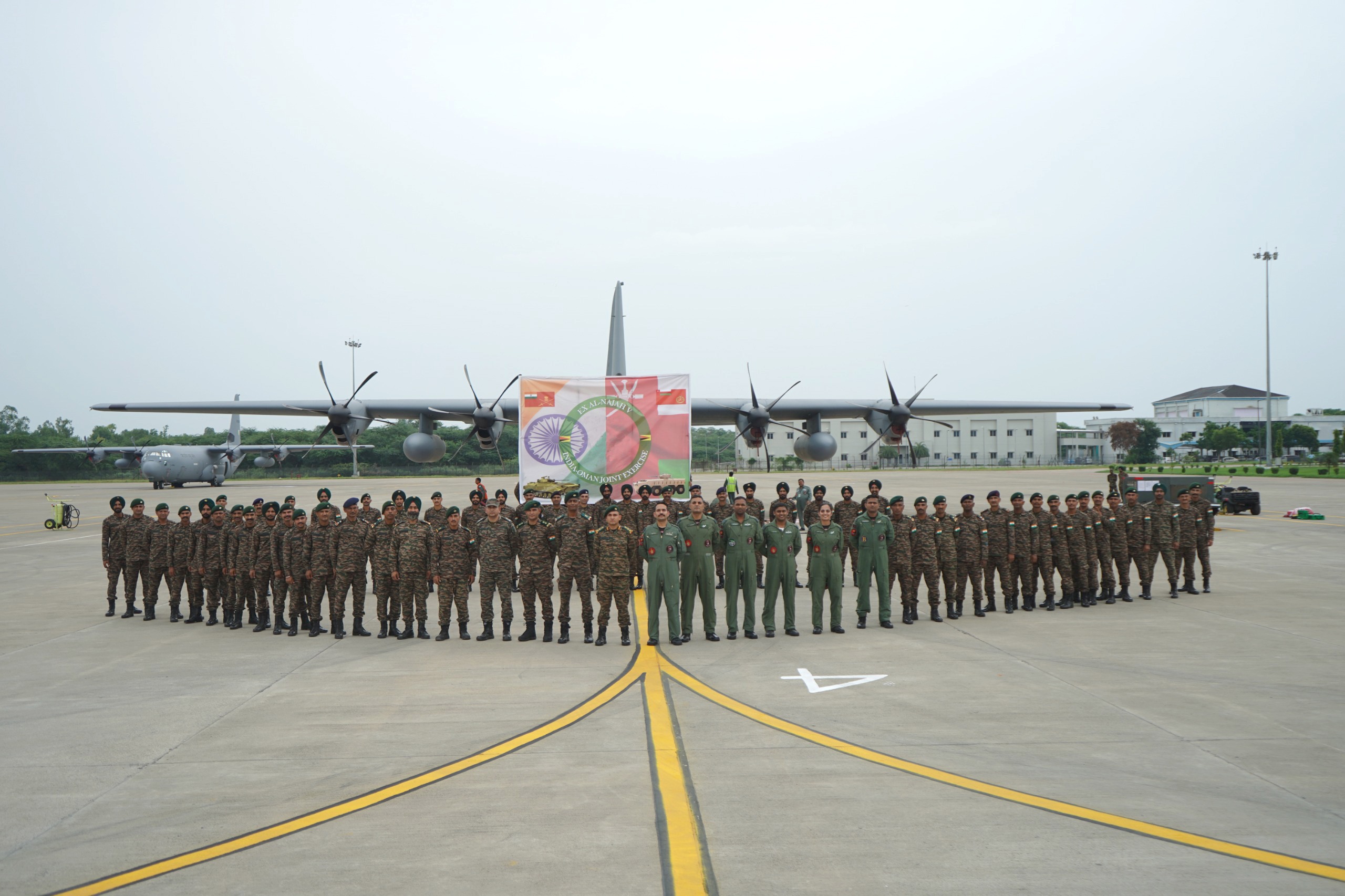
- 13 Sep 2024
In News:
- Indian Army contingent departed for the 5th edition of the India-Oman Joint Military Exercise AL NAJAH on September 12, 2024.
Key Details:
- Location: Rabkoot Training Area, Salalah, Oman.
- Frequency: Exercise AL NAJAH has been held biennially since 2015, alternating between India and Oman. Last edition was conducted at Mahajan, Rajasthan.
- Indian Army Contingent:
- Size: 60 personnel
- Composition: Battalion of the Mechanised Infantry Regiment, along with personnel from other arms and services.
- Royal Army of Oman Contingent:
- Size: 60 personnel
- Composition: Troops of the Frontier Force.
- Objective:
- Enhance joint military capability for counter-terrorism operations under Chapter VII of the United Nations Charter.
- Focus on operations in a desert environment.
- Tactical Drills:
- Joint Planning
- Cordon and Search Operation
- Fighting in Built-Up Areas
- Establishment of Mobile Vehicle Check Posts
- Counter Drone Operations
- Room Intervention
- Training Exercises:
- Combined field training exercises simulating real-world counter-terrorism missions.
- Outcomes Expected:
- Exchange of best practices in tactics, techniques, and procedures for joint operations.
- Foster interoperability, goodwill, and camaraderie between the two armies.
- Strengthen defense cooperation and enhance bilateral relations between India and Oman.
INDUS-X Summit 2024

- 14 Sep 2024
The third edition of the INDUS-X Summit, held on September 9-10, 2024, in California, marked a significant advancement in the collaborative defence innovation ecosystem between India and the USA. Co-organized by the U.S.-India Strategic Partnership Forum (USISPF) and Stanford University, the summit emphasized the deepening of defence cooperation through innovation, joint research, and investment.
Key Outcomes
A major highlight of the summit was the signing of a Memorandum of Understanding (MoU) between India’s Innovations for Defence Excellence (iDEX) and the US Department of Defense’s Defence Innovation Unit (DIU). This agreement aims to enhance collaboration in defence innovation. The summit also saw the release of the INDUS-X Impact Report and the launch of a dedicated webpage for the initiative on both iDEX and DIU platforms.
Technological Showcase and Expert Dialogue
The summit provided a platform for startups and MSMEs to present cutting-edge technologies. Additionally, two advisory forums—the Senior Advisory Group and the Senior Leaders Forum—facilitated in-depth discussions on future technology trends, defence supply chain resilience, and funding opportunities for defence innovation. The discussions included contributions from experts across the defence industry, investment sectors, academia, and think tanks from both countries.
Leadership and Commitment
The Indian delegation was led by Amit Satija, Joint Secretary (Defence Industries Promotion), who underscored the commitment of both India and the USA to advancing defence technology through strategic collaboration. Since its launch in June 2023 during the Indian Prime Minister’s visit to the US, INDUS-X has achieved significant milestones, reinforcing its role in strengthening the US-India defence innovation partnership.
Agni-4 ballistic missile successfully test-fired in Odisha
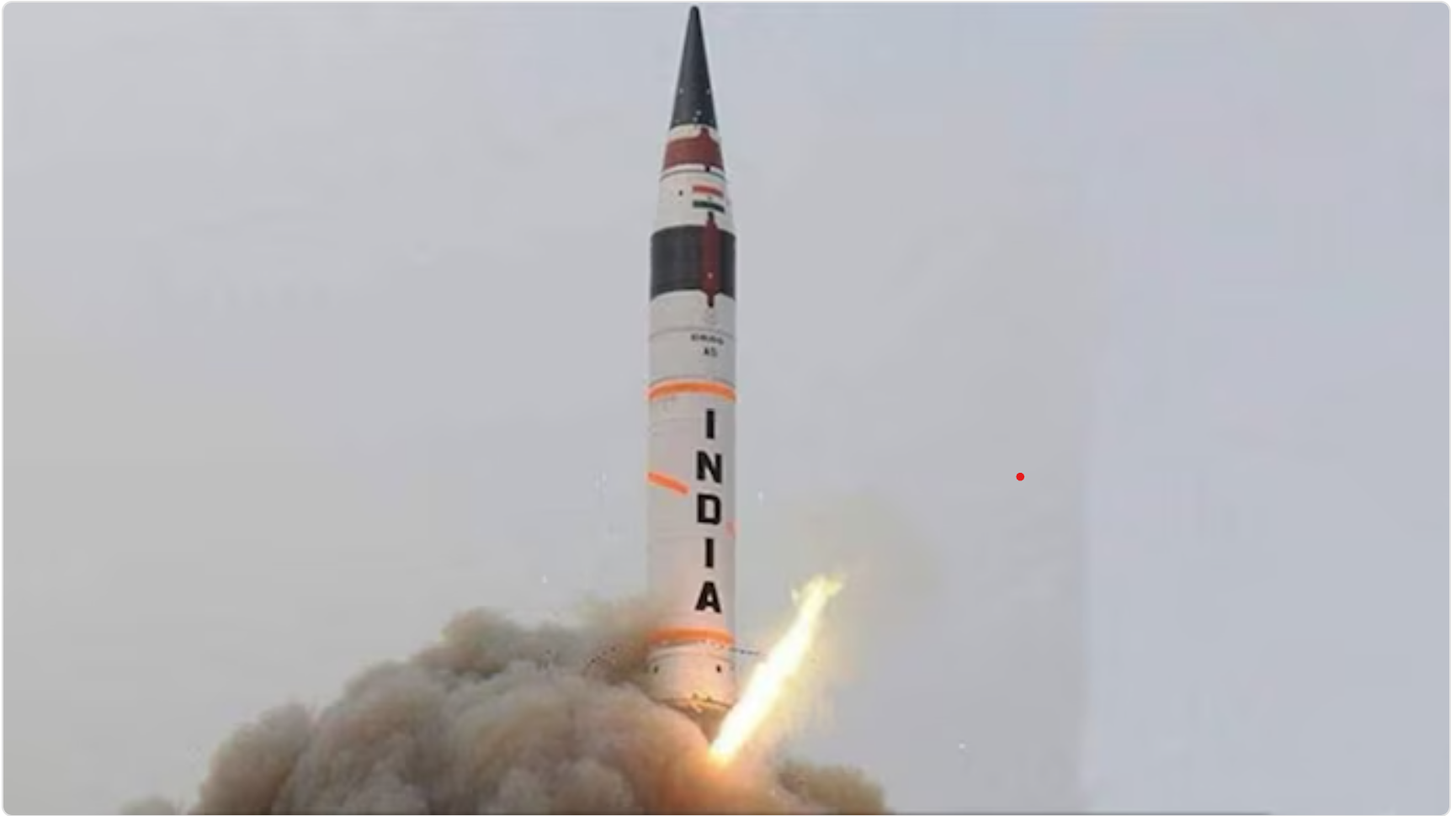
- 09 Sep 2024
In News:
India successfully test-fired the Agni-4 ballistic missile from the Integrated Test Range in Chandipur, Odisha. The test, conducted by the Strategic Forces Command (SFC) under India's Nuclear Command Authority (NCA), demonstrated the missile's operational and technical capabilities.
Key Details:
- Missile Specifications:
- Range: The Agni-4 missile has a maximum range of 4,000 kilometers.
- Payload: It can carry a payload of up to 1,000 kilograms.
- Length: The missile is approximately 20 meters long.
- Launch Platform: It is designed for deployment on a road-mobile launcher, enhancing its flexibility and mobility.
- Historical Context:
- Previous Test (2012): In its earlier test in 2012, Agni-4 successfully covered over 3,000 kilometers within 20 minutes. This was noted as the longest-range mission achieved by the Defence Research and Development Organisation (DRDO) at that time.
- Name Change: The Agni-4 was previously known as Agni-2 Prime.
- Development and Capabilities:
- Development: The Agni missiles, including the Agni-4, are developed by the DRDO, showcasing India's advancements in missile technology and strategic capabilities.
- Comparison with Agni-5: The Agni-4 is part of a series of Agni missiles that have progressively enhanced India's missile range and strike capabilities. The Agni-5 represents an even more advanced development in this series.
The successful test of Agni-4 underscores India's commitment to strengthening its strategic defense capabilities and maintaining its deterrence posture.
Inter-Services Organisations (ISOs) (Command, Control, and Discipline) Act
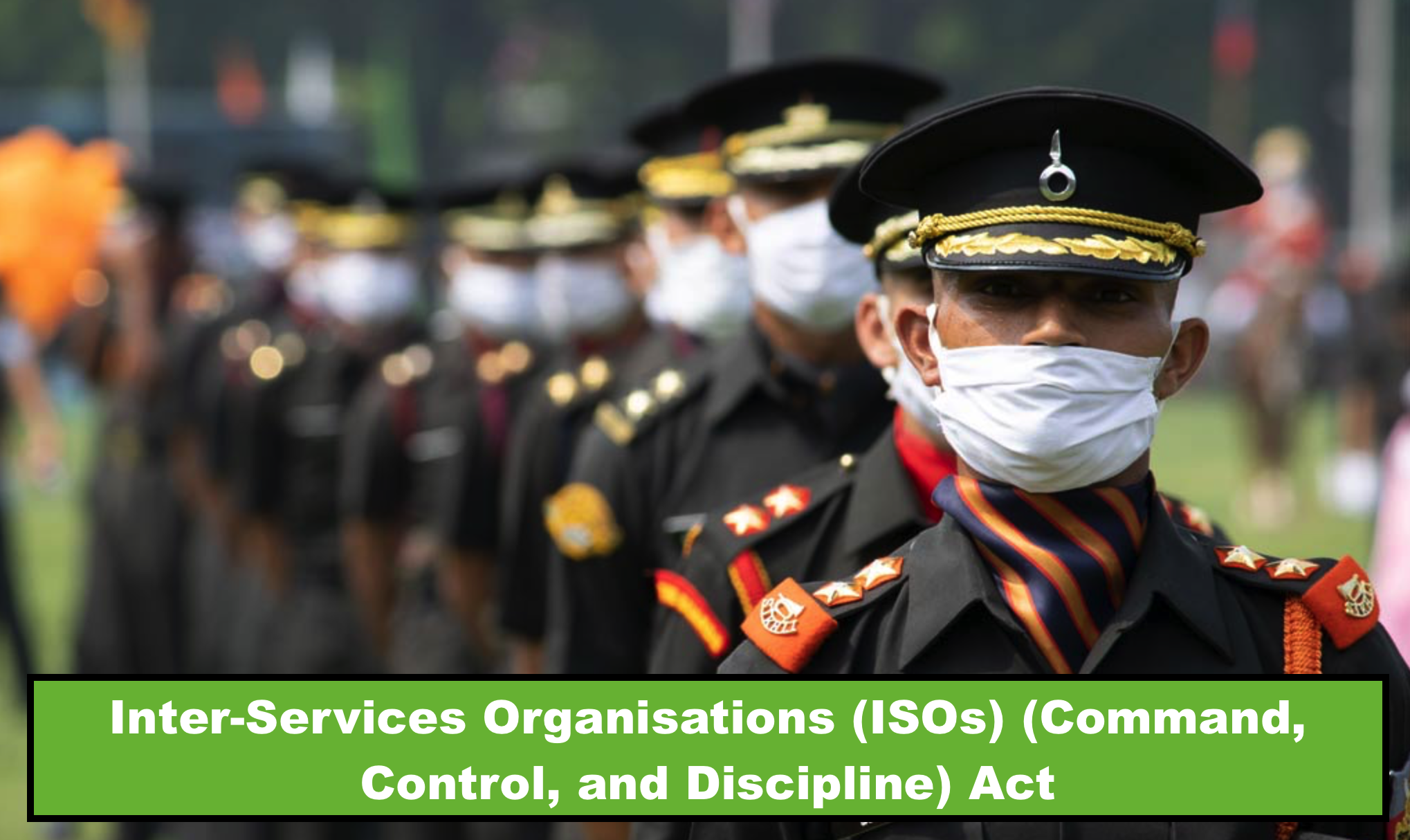
- 11 May 2024
Why is it in the News?
The Inter-Services Organisations (Command, Control and Discipline) Act has been notified in a gazette and has been enforced with effect from May 10, the Defence Ministry said recently.
About Inter-Services Organisations (ISOs) (Command, Control, and Discipline) Act:
- During the Monsoon Session of 2023, both houses of Parliament passed a bill aimed at enhancing the operational efficiency and coordination of Inter-Services Organisations (ISOs).
- These organisations comprise personnel from the Army, Air Force, and Navy, such as joint training institutions like the National Defence Academy, National Defence College (NDC), Defence Services Staff College (DSSC), and the Andaman and Nicobar Command (ANC).
Key Provisions of the ACT:
- Inter-Services Organisation Establishment: Existing Inter-Services Organisations will be considered constituted under the Act.
- The central government may establish an Inter-Services Organisation comprising personnel from at least two of the following services: the Army, Navy, and Air Force.
- Control of Inter-Services Organisations: The Act empowers the Commander-in-Chief or Officer-in-Command of an Inter-Services Organisation to exercise command and control over its personnel.
- They are responsible for maintaining discipline and ensuring the proper discharge of duties by service personnel.
- Supervision of an Inter-Services Organisation will be under the purview of the central government.
- Commander-in-Chief Eligibility: Officers eligible for appointment as Commander-in-Chief or Officer-in-Command include:
- A General Officer of the regular Army (rank above Brigadier),
- A Flag Officer of the Navy (rank of Admiral of the Fleet, Admiral, Vice-Admiral, or Rear-Admiral), or
- An Air Officer of the Air Force (a rank above Group Captain).
- Commanding Officer Appointment: The Act establishes a Commanding Officer responsible for leading a unit, ship, or establishment within the Inter-Services Organisation.
- The Commanding Officer carries out duties assigned by the Commander-in-Chief or Officer-in-Command.
- They have the authority to initiate disciplinary or administrative actions for personnel within the Inter-Services Organisation.
Need for the Act:
- Theaterisation Drive: The enactment aligns with the ongoing push for theaterisation, a vital military reform aimed at optimizing resources for future combat scenarios.
- Existing Framework Challenges: Currently, armed forces personnel are governed by separate laws— the Air Force Act, 1950, the Army Act, 1950, and the Navy Act, 1957—resulting in disjointed disciplinary powers.
- Under the current setup, only officers from the same service possess disciplinary authority over personnel governed by the respective Act, leading to command, control, and discipline challenges.
- Financial Implications: The present framework entails time-consuming processes and financial expenditures for personnel transfers.
- The proposed legislation seeks to remedy these challenges by enhancing discipline enforcement, expediting case resolutions, and potentially saving public funds.
Netzah Yehuda Battalion

- 23 Apr 2024
Why is it in the News?
The US government may soon sanction a battalion of the Israeli Defence Forces (IDF) over alleged human rights violations, marking the first such move in the history of the two countries’ relations.
What is the Netzah Yehuda Battalion?
- The Netzah Yehuda battalion was set up in 1999 to accommodate the religious beliefs of ultra-Orthodox Jews and other religious nationalist recruits in the army.
- It was established to facilitate military service for these communities, accommodating their religious observances by scheduling prayer and study times, and restricting their interactions with female soldiers.
- The battalion is historically stationed in the occupied West Bank region and faces intense scrutiny for allegedly committing human rights violations against Palestinians.
- Netzah Yehuda came on the radar of United States agencies after the death of an elderly Palestinian-American man, who was detained by the battalion.
What is the Unit Accused Of?
- The United States called for a criminal investigation after Netzah Yehuda soldiers were accused of being involved in the death of a 78-year-old Palestinian-American, Omar Assad, who died of a heart attack in 2022 after he was detained and was later found abandoned at a building site.
- A Palestinian autopsy found Assad died from a stress-induced heart attack brought on by being manhandled.
- The case attracted unusual attention because of his dual nationality, his age, and a demand by the U.S. State Department for an investigation into his death.
- There have been several other incidents in recent years, some captured on video, in which Netzah Yehuda soldiers were accused of, or charged with, abusing Palestinian detainees.
- The battalion primarily operated in the West Bank before it was moved out of the territory in late 2022 after U.S. criticism.
- The unit has recently been serving in Gaza.
Defence Attaché (DA)
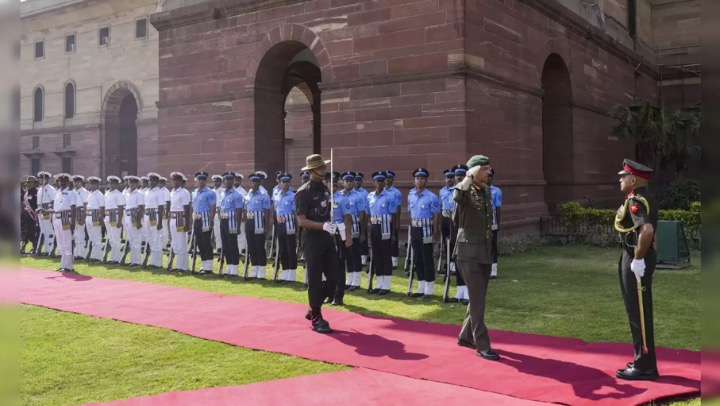
- 13 Apr 2024
Why is it in the News?
As India expands its presence in defense diplomacy and plans to deploy Defense Attachés to Indian missions in Africa, Armenia, and the Philippines, experts and experienced diplomats advise against simply "rationalizing" their numbers.
What’s a Defense Attaché?
- According to the Geneva Centre for the Democratic Control of Armed Forces (DCAF), a defence attaché is a member of the armed forces serving at an embassy as a “representative of his/her country’s defence establishment abroad and in this capacity enjoys the diplomatic status and immunity.
- The defence attaché’s work usually concerns bilateral military and defence relations.
- Some countries send attachés for security issues, such as migration or matters relating to police and justice.
- The defence attachés are also responsible for facilitating communication and cooperation between their home nation’s armed forces and the host country’s military.
- They act as military and/or security advisors to their country’s ambassador and embassy staff.
- They can also promote their home nation’s military weapons industry.
- Defence attachés collect and examine military intelligence, facilitate military cooperation pacts, and give an evaluation of security issues to their home country’s government.
- They also act as a link between diplomats and the military.
India to Send Defence Attachés to New Countries:
- India has started dispatching defence attachés to many new countries, while reportedly downsizing the military personnel at its missions in some other nations.
- 15-16 new attaches from the Indian Navy, the Indian Air Force (IAF), and the Indian Army are being posted to Poland, the Philippines, Armenia, and the African countries of Tanzania, Mozambique, Djibouti, Ethiopia, and Ivory Coast.
- In the next phase, 10 entirely new defence wings will be created in different countries, with a particular focus on nations to which arms can be exported.
Why the Other Countries Matter?
- India dispatching a defense attaché to Poland, which is a part of the European Union (EU) and has emerged as an important security partner in Europe in recent years, is also significant.
- The EU posted a military attaché to its mission in India for the first time last year. India’s move to do the same in Poland is “reflective of the desire to expand two-way defence ties.
- Armenia has become a major exporter of India’s arms.
- India has already inked deals with the Asian country for Pinaka rockets, Akash missiles, ammunition, and multi-barrel rocket launchers, with some of them coming amid Armenia’s clash with Azerbaijan over Nagorno-Karabakh.
- Armenia has shown interest in expanding its defence ties with India.
- China’s military assertiveness in the South China Sea has prompted India to grow military ties with ASEAN countries.
- India’s decision to send defence attachés for the first time to the Philippines comes in the wake of the sale of Indian arms to Manila.
- India signed a $375 million deal with the Philippines in 2022 to supply three batteries of the BrahMos missile and will soon start the delivery of the missiles to the Southeast Asian country.
Black Swan Event
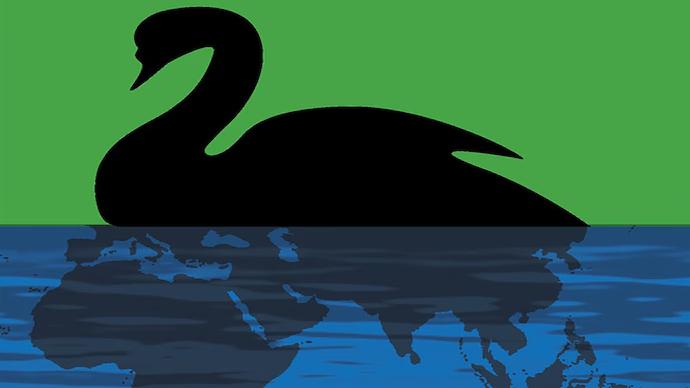
- 09 Apr 2024
Why is it in the News?
Army Chief Gen Manoj Pande on Monday called upon the force to be always prepared for 'black swan' events and "expect the unexpected" even as he identified technology as the new area for strategic competition among nations.
What is the Black Swan Event?
- A black swan is a rare, unpredictable event that comes as a surprise and has a significant impact on society or the world.
- These events are said to have three distinguishing characteristics:
- They are extremely rare and outside the realm of regular expectations
- They have a severe impact after they hit; and
- They seem probable in hindsight when plausible explanations appear.
When did the Term Originate?
- The black swan theory was put forward by author and investor Nassim Nicholas Taleb in 2001 and later popularised in his 2007 book – The Black Swan: The Impact of the Highly Improbable.
- In his book, Taleb does not try to lay out a method to predict such events but instead stresses building “robustness” in systems and strategies to deal with black swan occurrences and withstand their impact.
- The term itself is linked to the discovery of black swans.
- Europeans believed all swans to be white until 1697 when a Dutch explorer spotted the first black swan in Australia.
- The metaphor ‘black swan event’ is derived from this unprecedented spotting from the 17th century, and how it upended the West’s understanding of swans.
Implications of Black Swan Events:
- Black Swan events are characterized by their extreme rarity, severe impact, and widespread implications across various sectors.
- These unanticipated occurrences can trigger substantial disruptions, unveiling vulnerabilities in systems once thought resilient and prompting reassessments of risk management practices.
- Disruption: Black Swan events have the potential to disrupt economies, industries, and societies on a global scale.
- Their unforeseen nature can cause sudden shifts in financial markets, business operations, and everyday life, leaving lasting effects on the overall landscape.
- Uncertainty: The inability to predict Black Swan events using traditional methods injects considerable uncertainty into decision-making and planning for individuals, organizations, and governments.
- Navigating through such unpredictable circumstances can pose significant challenges for all affected parties.
- Vulnerability: These rare events can expose vulnerabilities in systems that were previously thought to be impervious or resilient.
- By doing so, Black Swan events emphasize the importance of preparedness and encourage the development of more robust risk management practices.
- Reassessment of Risk: In the aftermath of a Black Swan event, there is often a renewed focus on identifying and mitigating previously overlooked risks.
- This heightened awareness can lead to changes in investment strategies, regulatory policies, and overall risk management practices.
- Regulatory and Policy Responses: Governments and regulatory bodies may implement new regulations or policies in response to Black Swan events.
- These measures are designed to prevent or mitigate the impact of similar occurrences in the future, ultimately shaping the economic and social landscape.
- Behavioral and Attitude Changes: Black Swan events can significantly alter behaviors and attitudes as individuals and organizations adapt to the new reality.
- These shifts may include changes in consumer behavior, investment strategies, and approaches to risk management.
Examples of Black Swan Events:
- The Dot-com Bubble: In 2000, the valuation of many internet-based companies plummeted after a period of rapid growth.
- The 9/11 Terrorist Attacks: The events of September 11, 2001, had far-reaching consequences on global security, politics, and economies.
- The 2008 Financial Crisis: A series of shocks to Wall Street due to the unraveling of subprime lending practices caused significant economic turmoil.
- Brexit: The unexpected decision of the United Kingdom to leave the European Union in June 2016 caught many by surprise and caused the British pound to plummet against the US dollar.
- COVID-19 Pandemic: The ongoing global health crisis continues to significantly affect economies and markets worldwide.
- These instances illustrate the profound and widespread implications of Black Swan events, underscoring the importance of adaptability and resilience in an ever-changing global landscape.
Agni-Prime Ballistic Missile
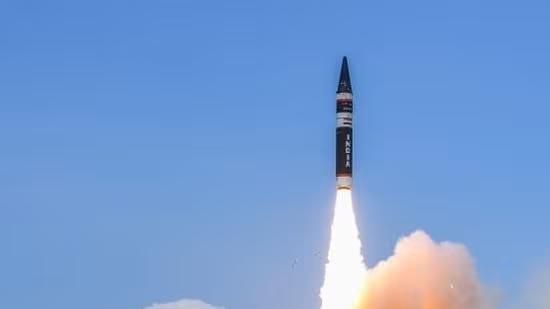
- 05 Apr 2024
Why is it in the News?
India has successfully flight-tested the new generation ballistic missile Agni-Prime from the APJ Abdul Kalam Island off the coast of Odisha.
About Agni-Prime Missile:
- Agni-P or Agni-Prime is a new generation nuclear-capable medium-range ballistic missile (MRBM) developed by the DRDO that incorporates technological advances from Agni-IV and Agni-V and is considered a successor for Agni-I and Agni-II missiles in the operational service of the SFC.
- Agni-Prime, with a strike range of 1,000 to 2,000 km, has significant upgrades, which include composite motor casing, maneuverable reentry vehicle (MaRV), improved propellants, and navigation and guidance systems.
- It is a two-stage, surface-to-surface, road-mobile, and solid-fueled missile that is transported by a truck and launched via a canister.
- It is a ballistic missile with a dual redundant navigation and guidance system.
Features:
- Although Agni-Prime looks similar to Agni-III, the weight is reduced by half.
- Agni-P will replace older generation missiles such as Prithvi-II (350 km), Agni-II (2,000 km), Agni-III (3,000 km), and Agni-4 (4,000 km) ballistic missiles.
- Agni-Prime incorporates upgrades such as propulsion systems, composite rocket motor casings, and advanced navigation and guidance systems.
- Along with Agni-V, Agni-P will provide India with stronger deterrence against countries such as China and Pakistan.
- While Agni-V brings all of China within its strike range, Agni-P seems to have been developed to counter Pakistan's forces.
- Agni-P is developed to achieve maximum maneuverability against missile defense systems and higher accuracy for precision strikes.
What is a Ballistic Missile and why is it named so?
- A Ballistic missile follows a ballistic flight path - which comprises three phases of flight.
- In the first phase or the boost phase, the solid-fuel rocket engine propels the missile upwards and it has to rapidly gain velocity and altitude, by knifing through the densest parts of the earth's atmosphere.
- The second and unpowered phase of flight happens in the upper reaches of the earth's atmosphere or in space, where the missile travels along its pre-determined path, but without the power of its engines.
- It is known as the coast phase or mid-course phase and during this time, it travels along a horizontal path.
- During the coasting, the missile is either in space or the upper atmosphere, where it faces minimal resistance or drag.
- In the third and final phase or the terminal phase, the missile descends and gets back into the earth's atmosphere and flies towards its target, while being guided by its on-board systems.
India’s indigenous fifth-gen fighter jet AMCA
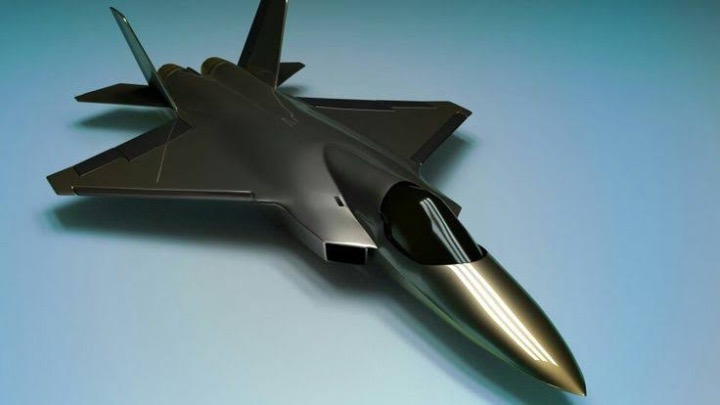
- 09 Mar 2024
Why is it in the News?
The Cabinet Committee on Security (CCS) this week cleared a Rs 15,000 crore project to design and develop the Advanced Medium Combat Aircraft (AMCA), India’s fifth-generation fighter multirole fighter jet.
About Advanced Medium Combat Aircraft (AMCA)?
- The AMCA will be India’s indigenous fifth-generation fighter aircraft.
- The indigenous Light Combat Aircraft (LCA) Tejas is a 4.5-generation single-engine multirole aircraft.
- The Aeronautical Development Agency (ADA) under the Defence Research and Development Organisation (DRDO) will be the nodal agency for executing the programme and designing the aircraft.
- It will be manufactured by state-owned Hindustan Aeronautics Limited (HAL).
- The aircraft will put India in a select group of nations that have their own fifth-generation fighter aircraft.
- Discussions for developing the AMCA started in 2007.
- The initial plan was to jointly develop the aircraft with Russia under a Fifth Generation Fighter Aircraft (FGFA) programme.
- However, India withdrew from the FGFA project in 2018.
Features of AMCA:
- Stealth: The 25-tonne twin-engine aircraft, which will be bigger that other fighters in the Indian Air Force inventory, will have advanced stealth features to avoid detection by enemy radar.
- With stealth features, this aircraft (AMCA) would be able to compete with other stealth fighters in the world.
- Fuel & Weapons: The aircraft will have a large, concealed internal fuel tank of 6.5-tonne capacity, and an internal weapons bay for a range of weapons, including indigenous weapons, to be buried in its belly.
- Engine: The AMCA Mk1 variant will have the US-built GE414 engine of the 90 kilonewton (kN) class, while the more advanced AMCA Mk2 will fly on the more powerful 110kN engine, which will be developed indigenously by DRDO’s Gas Turbine Research Establishment (GTRE) in collaboration with a foreign defense major.
- India has been talking with Safran SA of France, one of the world’s largest manufacturers of aircraft engines and related equipment, in order to finalize the roadmap for the development of the combat aircraft engine
- Another important aspect would be to ensure a higher utilization time and smaller serviceability or maintenance periods for the aircraft.
- This will be aided by the inclusion of a comprehensive Integrated Vehicle Health Management (IVHM) system to keep track of multiple structural components, and to assess the condition of the aircraft in real time.
- Other features such as a diverterless supersonic inlet for controlling air flow into the engines, and a serpentine air intake duct to shield the engines from radar emissions, are likely to be part of the AMCA.
Other Fifth-generation Fighters:
- Only a few countries have built a fifth-generation stealth fighter aircraft.
- The list of the aircraft currently in service includes:
- The F-22 Raptor and F-35A Lightning II of the US
- The Chinese J-20 Mighty Dragon, and
- The Russian Sukhoi Su-57.
INS Jatayu, India’s new naval base in Lakshadweep
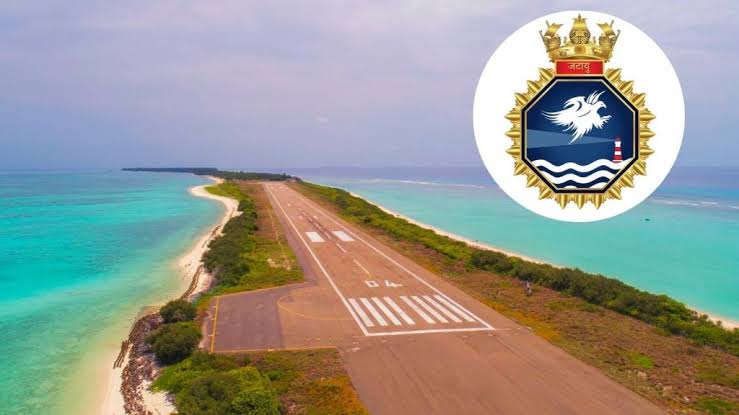
- 06 Mar 2024
Why is it in the News?
On Wednesday (March 6), Naval Detachment Minicoy will be commissioned as INS Jatayu, an upgraded naval base, marking an important milestone in the Indian Navy’s resolve to incrementally augment security infrastructure at the strategic Lakshadweep Islands.
About INS Jatayu Naval Base:
- The existing Naval Detachment Minicoy, which is under the operational command of the Naval Officer-in-Charge (Lakshadweep), will be commissioned as INS Jatayu.
- A naval detachment has administrative, logistics, and medical facilities.
- INS Jatayu will be upgraded to a naval base with additional infrastructure such as an airfield, housing, and personnel, after obtaining the requisite environmental and other clearances.
- The fragile ecology of the island may pose challenges for the construction but there are plans to construct a new airfield that will be capable of operating both military and civil aircraft.
Significance of INS Jatayu?
- The basing of an independent naval unit with requisite infrastructure and resources will enhance its overall operational capability in the islands.
- The establishment of the base is in line with the government’s focus on comprehensive development of the islands.
- The base will enhance its operational reach, facilitate its anti-piracy and anti-narcotics operations in the western Arabian Sea, and augment its capability as the first responder in the region.
- With the commissioning of INS Jatayu, the Indian Navy will add to its strength on the western seaboard.
- The proposed airfield will allow operations for a range of aircraft, including P8I maritime reconnaissance aircraft and fighter jets, and extend the Navy’s reach and operational surveillance capabilities at a time when India is seeking to counter the growing Chinese influence in the Indian Ocean Region.
- This has an immediate bearing at a time when India’s relations with the Maldives have come under strain since the election of the pro-China President Mohamed Muizzu.
About the Lakshadweep Islands:
- Lakshadweep, ‘a hundred thousand islands’ in Sanskrit and Malayalam, is an archipelago of 36 islands located between 220 km and 440 km from Kochi.
- The islands, only 11 of which are inhabited, have a total area of only 32 sq km.
- The Lakshadweep are part of a chain of coralline islands in the Indian Ocean that includes Maldives to the south, and the Chagos archipelago farther beyond, to the south of the equator.
- Given their location in the Indian Ocean, the Lakshadweep are of huge strategic importance to India.
- Minicoy straddles vital Sea Lines of Communications (SLOCs) — the world’s main maritime highways — including the Eight Degree Channel (between Minicoy and Maldives) and the Nine Degree Channel (between Minicoy and the main cluster of Lakshadweep islands).
- In consequence, the Lakshadweep Islands are also vulnerable to marine pollution.
Grey-zone Warfare Latest Entry in Lexicon of Warfare

- 04 Mar 2024
Why is it in the News?
On the last day of the 2024 Raisina Dialogue (February 24), India’s Chief of Defence Staff General Anil Chauhan said that “grey zone warfare” is the latest in informal warfare.
What is the Grey Zone Warfare?
- Grey zone warfare refers to a strategic approach where a nation seeks to gain advantages over others without engaging in overt conflict.
- It involves a series of tactics, including cyberattacks, disinformation campaigns, and economic pressures, aimed at subtly undermining or destabilizing adversaries.
- China has notably employed this strategy against India and neighboring countries.
What are the China's Grey Zone Tactics Against India?
- South China Sea Activities: China asserts its dominance in the South China Sea using naval and civilian vessels, raising tensions with neighboring countries like India.
- Infrastructure Near Borders: China constructs infrastructure and settlements near India's borders, bolstering territorial claims and strategic positioning.
- Digital Investments: China invests in Indian digital platforms and media, influencing public narratives and perceptions.
India's Counter-Measures:
- Inter-Agency Collaboration: India promotes collaboration among defense, intelligence, and law enforcement agencies to devise comprehensive strategies to counter grey zone threats.
- Enhanced Vigilance: India increases surveillance and presence in border areas and strategic locations to detect and respond to covert Chinese activities.
- Regulating Foreign Investments: India scrutinizes foreign investments in critical sectors, particularly technology, to safeguard national security interests.
Long-Term Implications for India:
- Information Warfare: Grey zone conflicts often involve digital misinformation, influencing public opinion and perceptions.
- Economic Leverage: Dependency on foreign investments poses vulnerabilities if used as leverage by investing nations.
- Technology Dependency: Heavy reliance on foreign technology exposes India to risks, emphasizing the need to bolster indigenous technological capabilities.
Conclusion
Grey zone warfare encompasses a multifaceted strategic landscape, blending digital, economic, and geopolitical tactics. India recognizes these challenges and is actively devising strategies to navigate this complex terrain.
China Moves its Nationals into its Vacant ‘Defence Villages’ Along LAC (Indian Express)
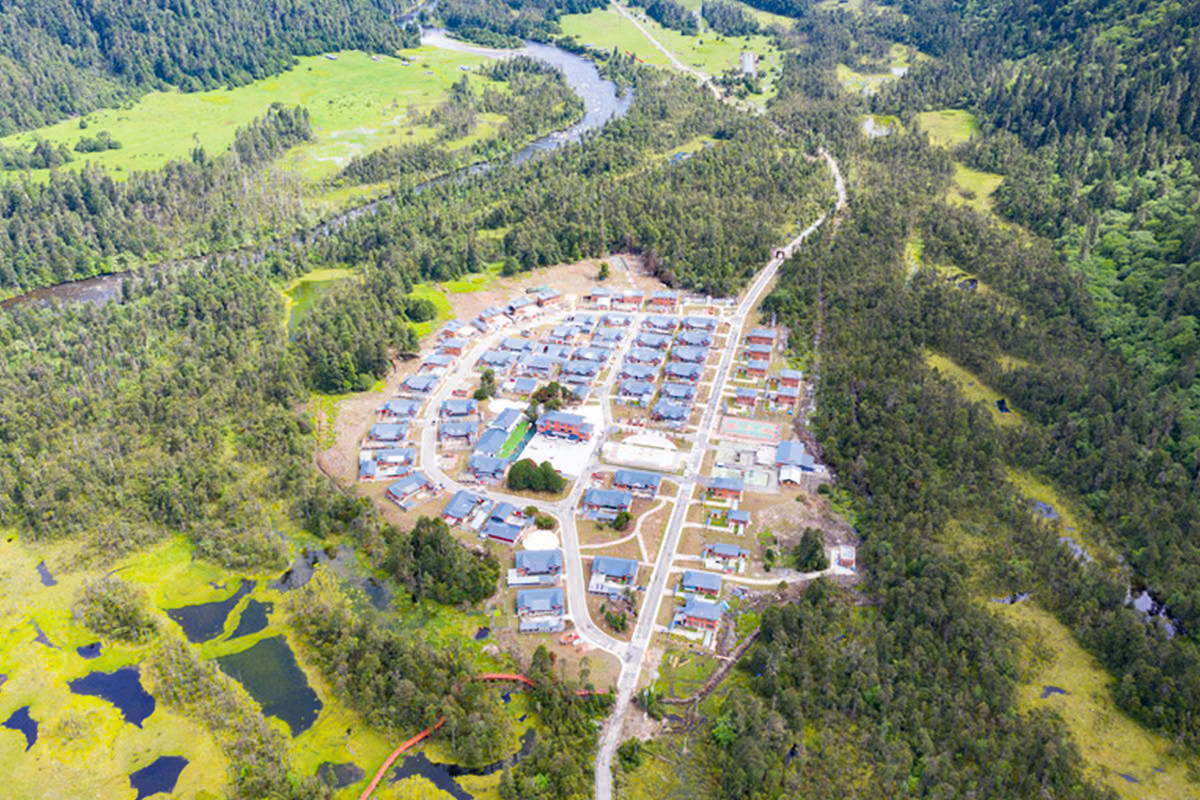
- 15 Feb 2024
Why is it in the News?
Chinese nationals have started occupying several of their model “Xiaokang” border defence villages across India’s north-eastern borders which the country has been building along the Line of Actual Control (LAC) since 2019.
News Summary:
- Chinese activity has been observed in several villages situated on its side of the Line of Actual Control (LAC) opposite the Lohit Valley and the Tawang sector of Arunachal Pradesh.
- Over the past five years, China has been undertaking the construction of 628 "well-off villages" along India's borders with the Tibet Autonomous Region, encompassing regions like Ladakh and Arunachal Pradesh.
- The precise purpose of these villages remains ambiguous, although the structures are believed to serve as "dual-use infrastructure," serving both civilian and military functions.
What is the Line of Actual Control (LAC)?
- The LAC serves as the boundary separating areas under Indian administration from those under Chinese administration.
- However, it is not a formally agreed-upon boundary, lacking delineation on maps or physical demarcation on the ground.
- India views the LAC as approximately 3,488 km in length, while China's perspective estimates it to be around 2,000 km.
- The LAC is segmented into three sectors: the eastern sector covering Arunachal Pradesh and Sikkim, the middle sector spanning Uttarakhand and Himachal Pradesh, and the western sector in Ladakh.
- India's official boundary line, as depicted on maps released by the Survey of India, encompasses both Aksai Chin and Gilgit-Baltistan, diverging from the LAC.
- Consequently, the LAC does not coincide with India's claim line.
- For China, the LAC generally aligns with its claim line, except in the eastern sector, where it asserts control over the entire territory of Arunachal Pradesh, which it regards as South Tibet.
Dispute over the LAC and Controversy Surrounding Claim Lines in Ladakh:
- India disputes the validity of the Line of Actual Control (LAC), asserting that it is a construct devised by China.
- The Chinese demarcation appears as a series of disconnected points on a map, lacking a clear and consistent delineation.
- India contends that the line should exclude territorial gains made through aggression in 1962 and instead reflect the positions as of September 8, 1962, before the Chinese incursion.
- This ambiguity in the Chinese definition of the LAC leaves room for China to pursue incremental changes on the ground through military actions, as evidenced by the clash in the Galwan Valley between the Indian Army and the Chinese PLA in 2020.
- Aksai Chin, located in the Ladakh region of the princely state of Jammu and Kashmir, was not part of British India, despite being under British Empire control.
- As a result, while the eastern boundary was clearly defined in 1914 with the signing of the Shimla Agreement on the McMahon Line by British India, the western boundary in Ladakh remained unresolved.
- These historical maps, still officially recognized today, formed the basis of engagements with China, ultimately culminating in the 1962 War.
Infrastructure Development along the LAC:
- Consistently, China has enhanced its existing infrastructure along the Line of Actual Control (LAC), focusing on improving connectivity through mountain passes, constructing roads, bridges, and model villages.
- Additionally, China has been constructing infrastructure, including border villages, within Bhutanese territory.
- Over the past three to four years, India has intensified efforts to bolster its border infrastructure, encompassing initiatives to enhance forward connectivity, establish alternative routes to the LAC, and connect remote areas.
- India's Vibrant Villages program aims to modernise 663 border villages, providing them with essential amenities in the initial phase.
- Notably, 17 of these villages located along the borders with China in Ladakh, Himachal Pradesh, Uttarakhand, Sikkim, and Arunachal Pradesh have been earmarked for development as pilot projects under this program.
- Moreover, significant progress is underway on three major highways in Arunachal Pradesh:
- The Trans-Arunachal Highway
- The Frontier Highway, and
- The East-West Industrial Corridor Highway.
Defence upgrade roadmap: Apex body led by Prime Minister, MoD sci-tech unit (Indian Express)
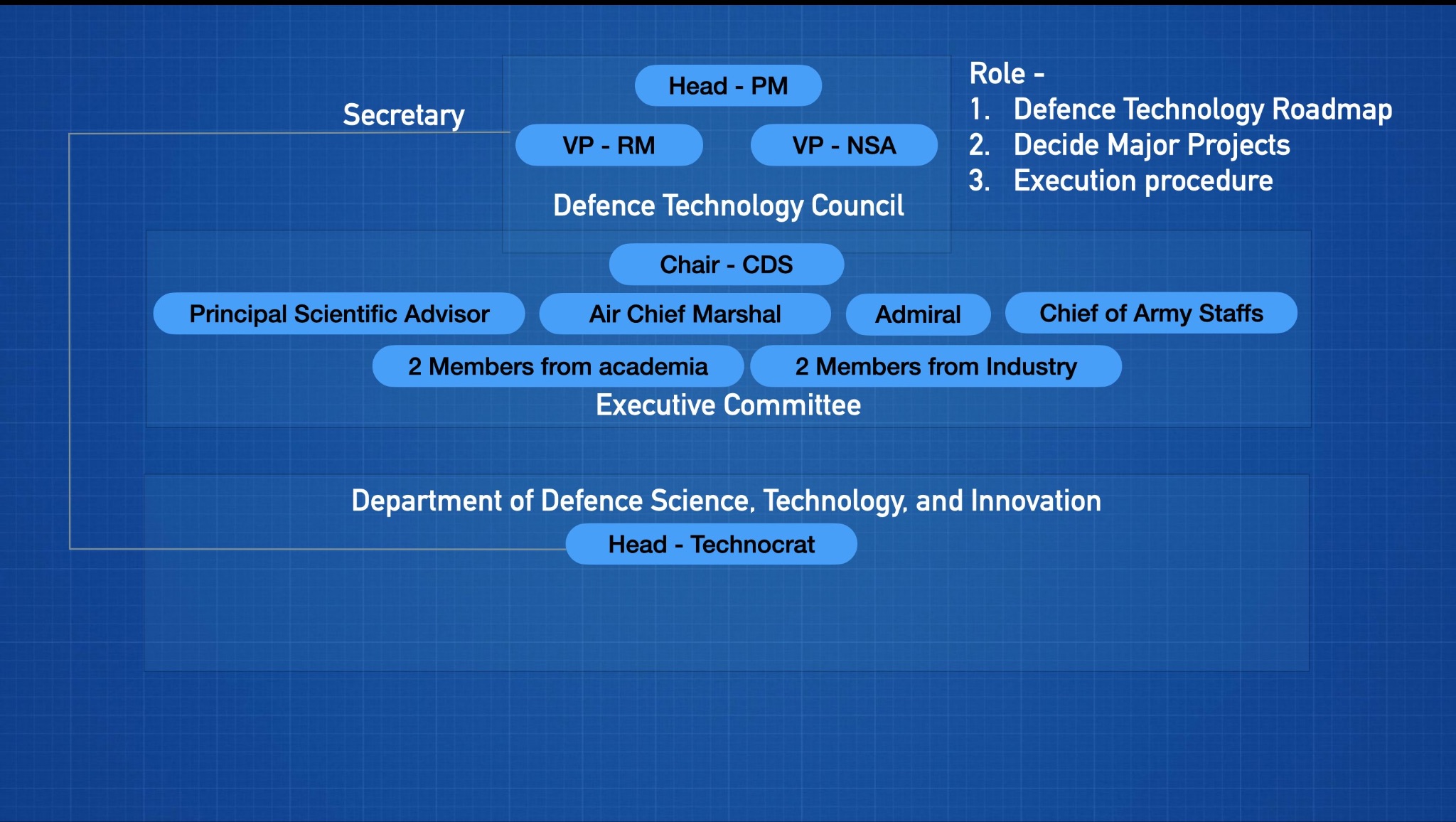
- 17 Jan 2024
Why is it in the News?
The expert committee, led by Vijay Raghavan, the former principal scientific advisor, proposed that the country's defence technology roadmap be overseen by an apex body called the Defence Technology Council, with the Prime Minister serving as its chair.
The context in which the Vijay Raghavan Committee was Established:
- Formed by the government last year, the committee was tasked with assessing the functioning of the Defence Research and Development Organisation (DRDO).
- The committee's report, submitted this month, follows the government's initiative to address significant delays in various DRDO projects.
- This scrutiny comes in response to concerns raised by the Parliamentary Standing Committee on Defence, which noted that 23 out of 55 mission mode projects faced substantial delays.
- In 2022, the Comptroller and Auditor General (CAG) highlighted that 67% of the 178 scrutinized projects failed to meet their initially proposed timelines.
- The CAG attributed these delays to factors such as persistent alterations in design specifications, delays in completing user trials, and delays in placing supply orders.
- The prevalent practice of seeking multiple extensions for projects, particularly those designated under the Mission Mode category, has been identified as undermining the intended purpose of these initiatives.
Major Recommendations of the Vijay Raghavan Committee:
- Establishment of the Defence Technology Council: Headed by the Prime Minister, with the Defence Minister and the National Security Advisor serving as Vice Presidents.
- This council is envisioned to play a pivotal role in charting the nation's defence technology roadmap, deciding on significant projects, and overseeing their execution.
- An executive committee, led by the Chief of Defence Staff, is proposed, featuring members such as the Principal Scientific Advisor, the three service chiefs, their vice chiefs, and representation from academia and industry.
- Creation of the Department of Defence Science, Technology, and Innovation: To be led by a technocrat, this department aims to foster defence research and development within the academic and startup ecosystem.
- Additionally, it is designated as the secretariat for the Defence Tech Council chaired by the Prime Minister.
- Drawing expertise from scientists in the Defence Research and Development Organisation (DRDO) and academia, it will compile a knowledge repository on production expertise, conduct background research for the Defence Tech Council, and contribute to informed decisions on technology production.
- Restructuring of DRDO's Focus: Recommends that DRDO concentrate on its original mission of research and development for defence purposes.
- The suggestion is for DRDO to abstain from involvement in productization, production cycles, and product management, tasks deemed more suitable for the private sector.
- Currently, DRDO is engaged in all aspects of its projects, spanning from research and development to production.
iDEX innovators to exhibit futuristic technologies at Vibrant Gujarat summit (ET)

- 08 Jan 2024
Why is it in the News
The Ministry of Defence on Sunday said that Innovations for Defence Excellence-Defence Innovation Organization (iDEX-DIO) will participate in the 10th edition of the Vibrant Gujarat Summit from January 10 to 12 in Gandhinagar.
About iDEX:
- iDEX (Innovations for Defence Excellence), the flagship scheme of the Ministry of Defence, Govt of India launched by Prime Minister Modi in 2018.
- The objective of the scheme is to cultivate an innovation ecosystem in the Defence and Aerospace sector by collaborating with startups, innovators, MSMEs, incubators, and academia.
- iDEX offers grants and support for R&D with significant potential for future adoption in Indian defense and aerospace.
- It is currently engaged with around 400+ Startups and MSMEs, till now procurement of 31 items worth over Rs 2000 Cr. has been cleared.
- Recognized as a game-changer in the defense ecosystem, iDEX has received the PM Award for Innovation in the defense sector.
What is the Vibrant Gujarat Summit?
- The Government of Gujarat organizes the Vibrant Gujarat Global Summit, also known as Vibrant Gujarat, a biennial global business event held in the state of Gujarat, India.
- It attracts business leaders, investors, corporations, thought leaders, and policymakers, serving as a platform to understand and explore business opportunities in Gujarat.
- Launched in 2003 and now held every two years, the summit aims to promote Gujarat as an attractive investment destination, fostering partnerships and collaborations across various sectors.
- Industry associations, both nationally and internationally, support the summit, making it one of Gujarat's crucial economic forums.
- The event creates a platform for business leaders, policymakers, and investors to explore opportunities for investment, collaboration, and partnership in sectors such as energy, manufacturing, infrastructure, information technology, agriculture, healthcare, and more.
- It facilitates discussions, negotiations, and agreements in these key sectors.
- The Tenth edition of Vibrant Gujarat Global Summit is being held from 10 to 12 January 2024 in Gandhinagar, Gujarat.
- Its theme is 'Gateway to the Future'.
- This Tenth Edition of the Summit will celebrate “20 Years of Vibrant Gujarat as the Summit of Success”.
- There are 34 Partner countries and 16 Partner organizations for this year’s Summit.
- Further, the Ministry of Development of North-Eastern Region will utilize the Vibrant Gujarat platform to showcase investment opportunities in the North-Eastern regions.
INS Beas to Be Upgraded (PIB)
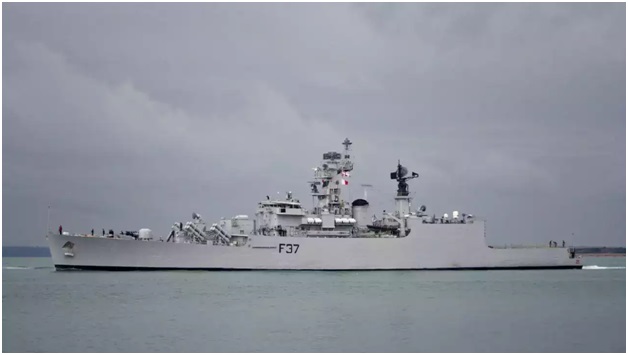
- 16 Oct 2023
Why in the News?
The Ministry of Defence signed a contract on October 16, 2023, in New Delhi for the life Upgrade and Re-Powering of "INS Beas" with Kochi-based M/S Cochin Shipyard Limited (CSL) at an overall cost of Rs. 313.42 Cr.
Context:
- The INS Beas is gaining attention as the first Brahmaputra Class Frigate to undergo a transition from steam to diesel propulsion.
- The completion of its Mid-Life Upgrade and Re-Powering in 2026 is expected to result in the INS Beas joining the active fleet of the Indian Navy, equipped with a modernized weapon suite and upgraded combat capabilities.
About INS Beas:
- INS Beas (F37) stands as a Brahmaputra-class frigate within the Indian Navy, constructed at the Garden Reach Shipbuilders and Engineers (GRSE) in Kolkata.
- Commissioned on July 11, 2005, it is the second ship in the Indian Navy to carry this name, with the first being a Leopard-class frigate commissioned in 1960 and decommissioned in 1992.
- Role: Functioning as a versatile warship, INS Beas is proficient in various missions, encompassing anti-aircraft, anti-submarine, and anti-ship warfare.
- Additionally, it plays a crucial role in patrolling, surveillance, and safeguarding India's maritime interests.
- Features: The ship's design and construction are wholly Indian, derived from the modification of the Godavari-class frigate.
- With a displacement of about 3,850 tonnes, INS Beas boasts a length of 126 meters (413 feet) and a beam width of 14.5 meters (48 feet).
- Propulsion: Powered by 2 steam turbines, INS Beas demonstrates remarkable agility, capable of reaching speeds exceeding 30 knots during naval operations.
- Technology: Equipped with modern sensor suites and matching weapon systems, the ship embodies cutting-edge technology to enhance its operational capabilities.
